Tanzania: On a safari, animals and people are the riches of a poor nation
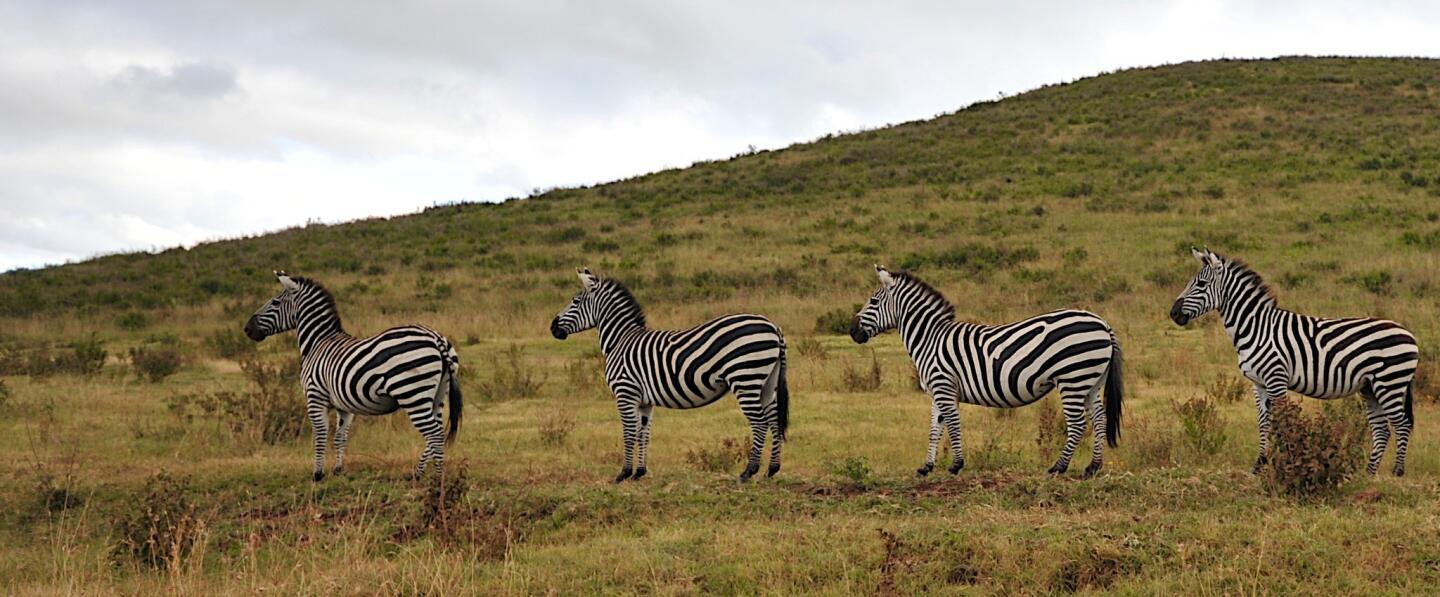
There was no trouble spotting the zebra or any other form of wildlife in the Ngorongoro Crater, which has one of the densest concentrations of animals in Africa. (Steve Stroud / Los Angeles Times)
Fire was the last thing we expected on an African safari, but that’s what we found when we arrived earlier this year in northern Tanzania for a long-anticipated safari. We stayed vigilant during our two-week trip, but the animals appeared unfazed. In time, so were we. We saw firsthand new grass within days of the passing of the fire enticing wildebeest, zebras, impalas and gazelles to return. Our hosts reminded us that the fires foster new growth for some of the country’s most treasured grazers that, in turn, help stimulate the flow of tourism dollars, so needed in a country where 36% of the population lives in poverty. That contrasts with scenes of breathtaking beauty. Here is some of what we saw.
--Steve Stroud
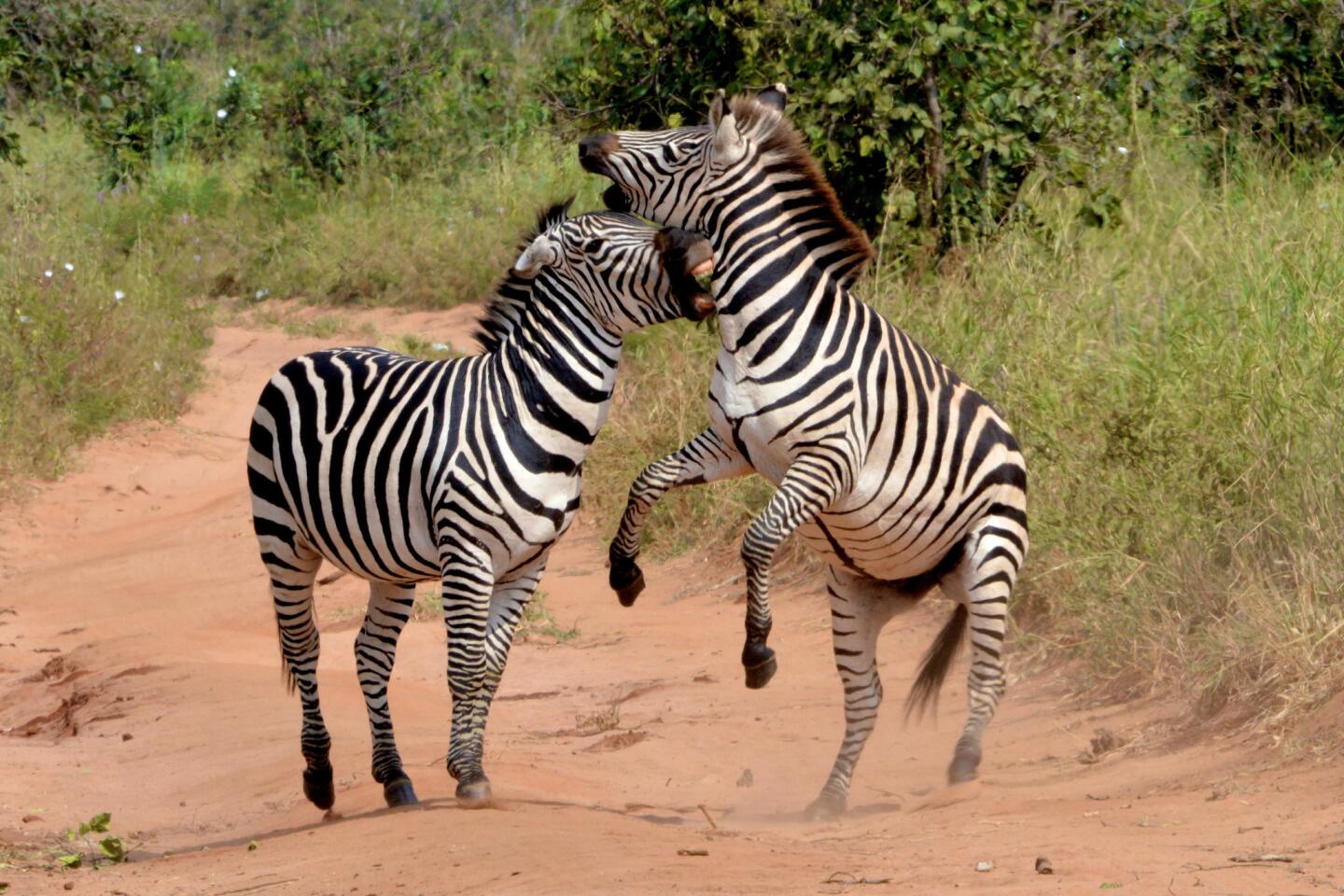
Near and in the Tarangire National Park, wildlife is also plentiful. This is where we started our trip, and zebras challenging one another in a playful fight were the first animals we spotted. (Steve Stroud / Los Angeles Times)
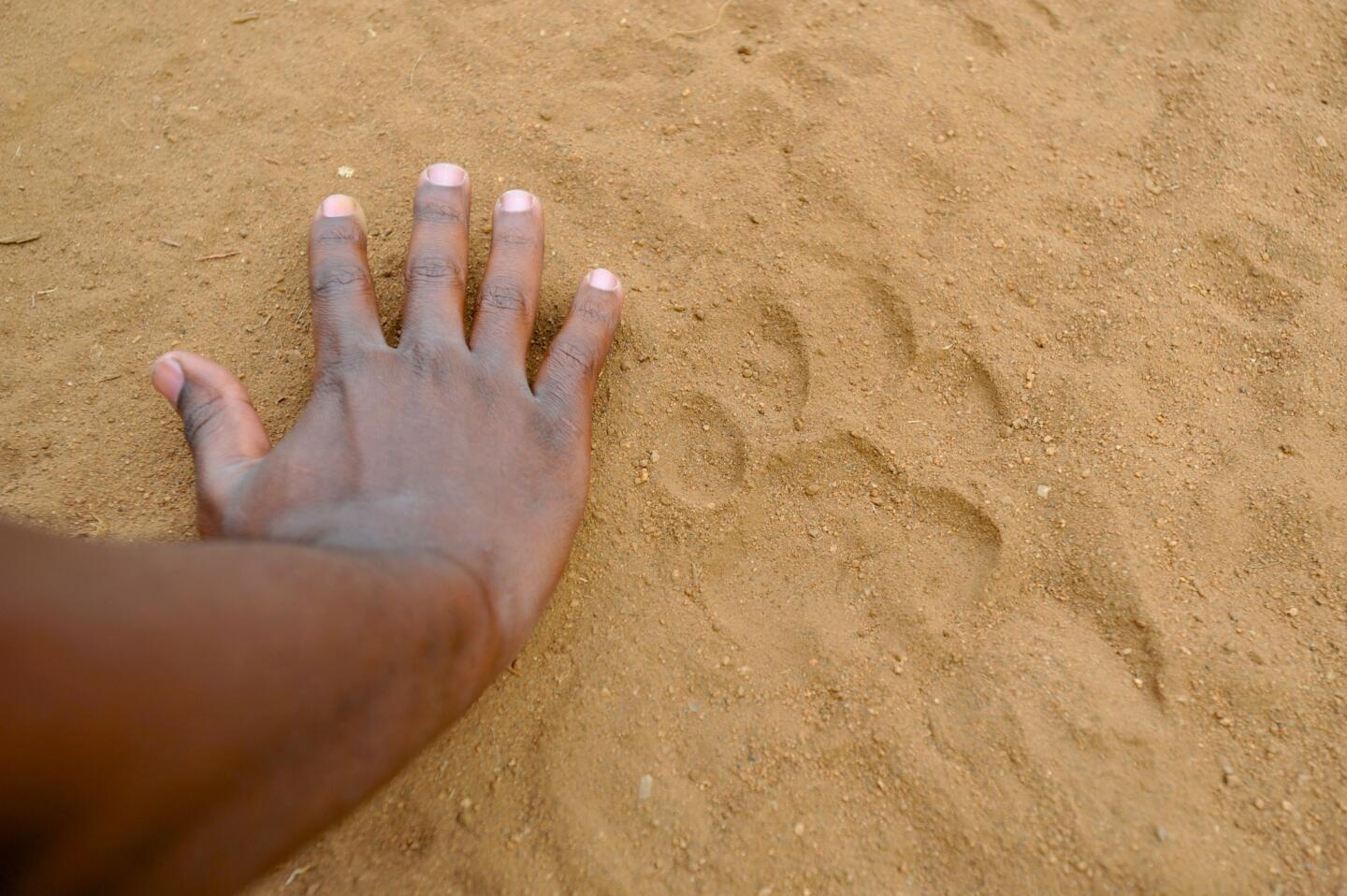
It wouldn’t be long, however, before George Killas, our all-in-one driver/naturalist, would spot the tracks of a lion. The rutted, dirt roads so common in northern Tanzania often yield the identities of all forms of wildlife. (Steve Stroud / Los Angeles Times)
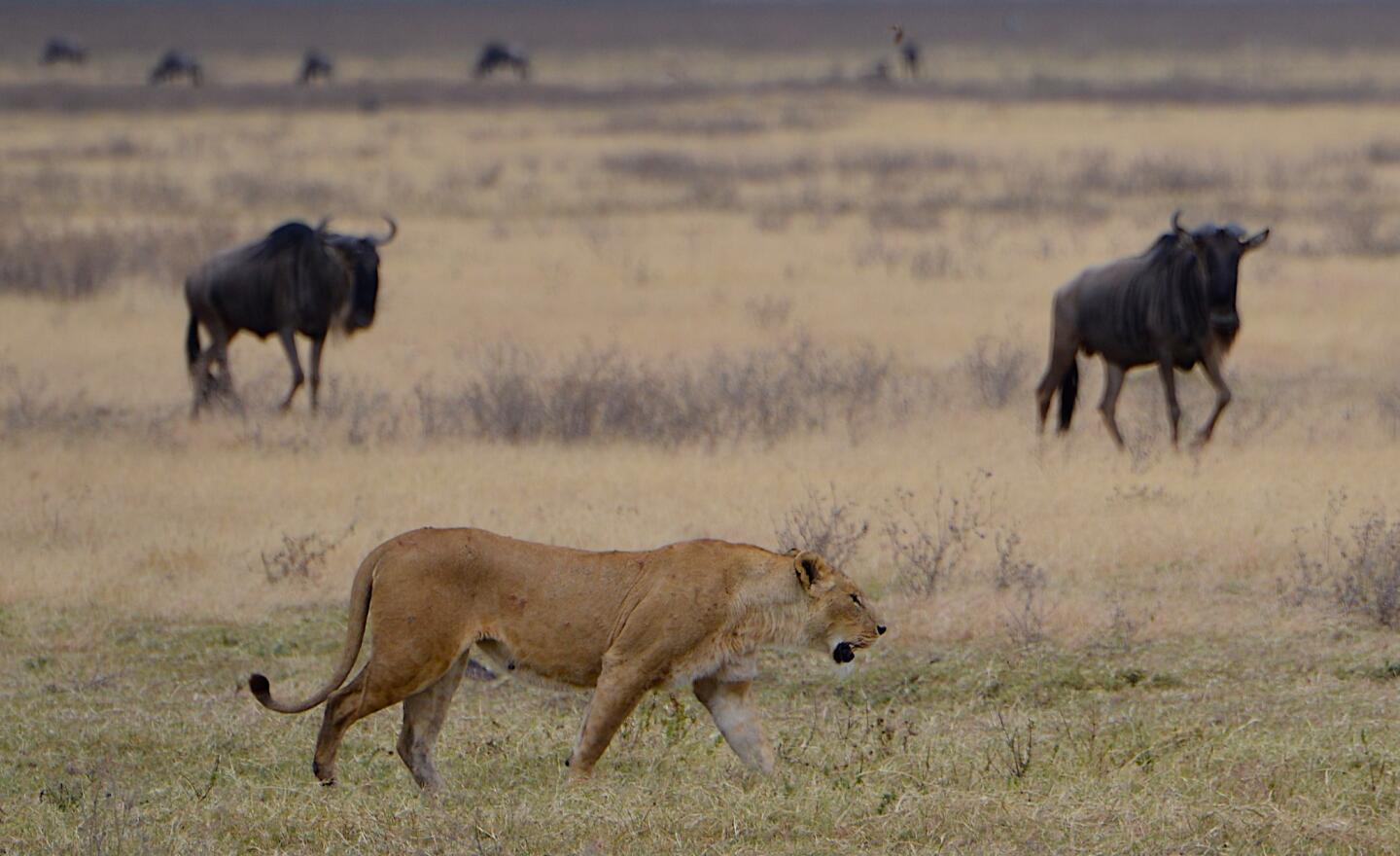
We saw amu lions on this trip -- sleeping, playing, lumbering along -- but nothing was as exciting as watching a hungry beast on the prowl for its next meal. (Steve Stroud / Los Angeles Times)
Advertisement
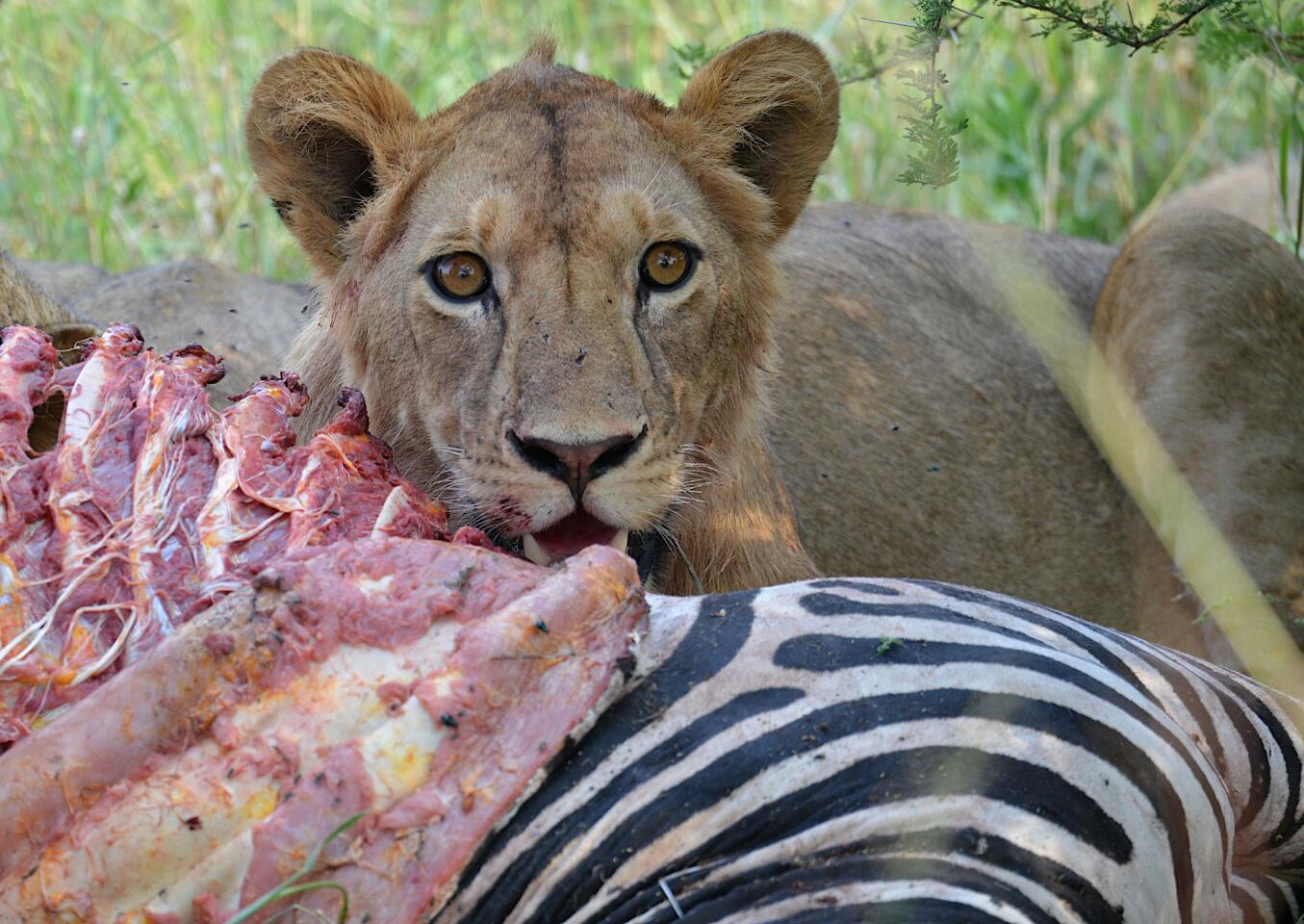
And scoring! A pride of seven lions feasted on the first kill we witnessed on our safari. The meager remains of the zebra fed the hyenas and vultures that came later. The Masai, tribal cattle and sheep herders, populate this part of Tanzania and know well the eating habits of the lions. For instance, a well-fed lion will be satiated for three or so days after a hearty meal. (Steve Stroud / Los Angeles Times)
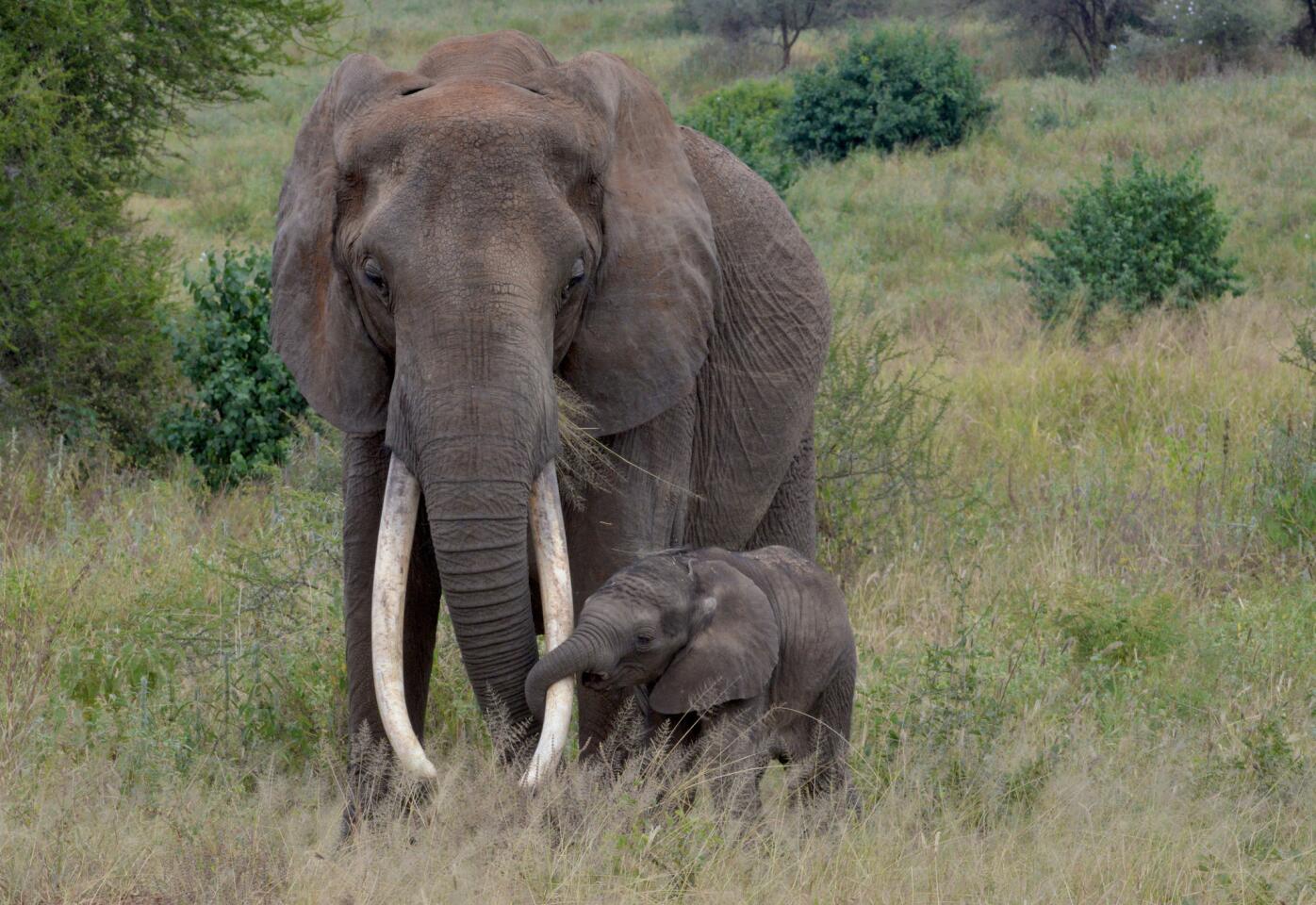
While most species of animals -- and tourists -- keep a sharp lookout for lions, elephants show little concern for anything but their young. The entire herd is involved in protecting and caring for a baby elephant. But the elephant’s worst nightmare is not of the four-legged variety. Poaching for tusks in this area is not the problem it is in Kenya, but nevertheless, does happen. (Steve Stroud / Los Angeles Times)
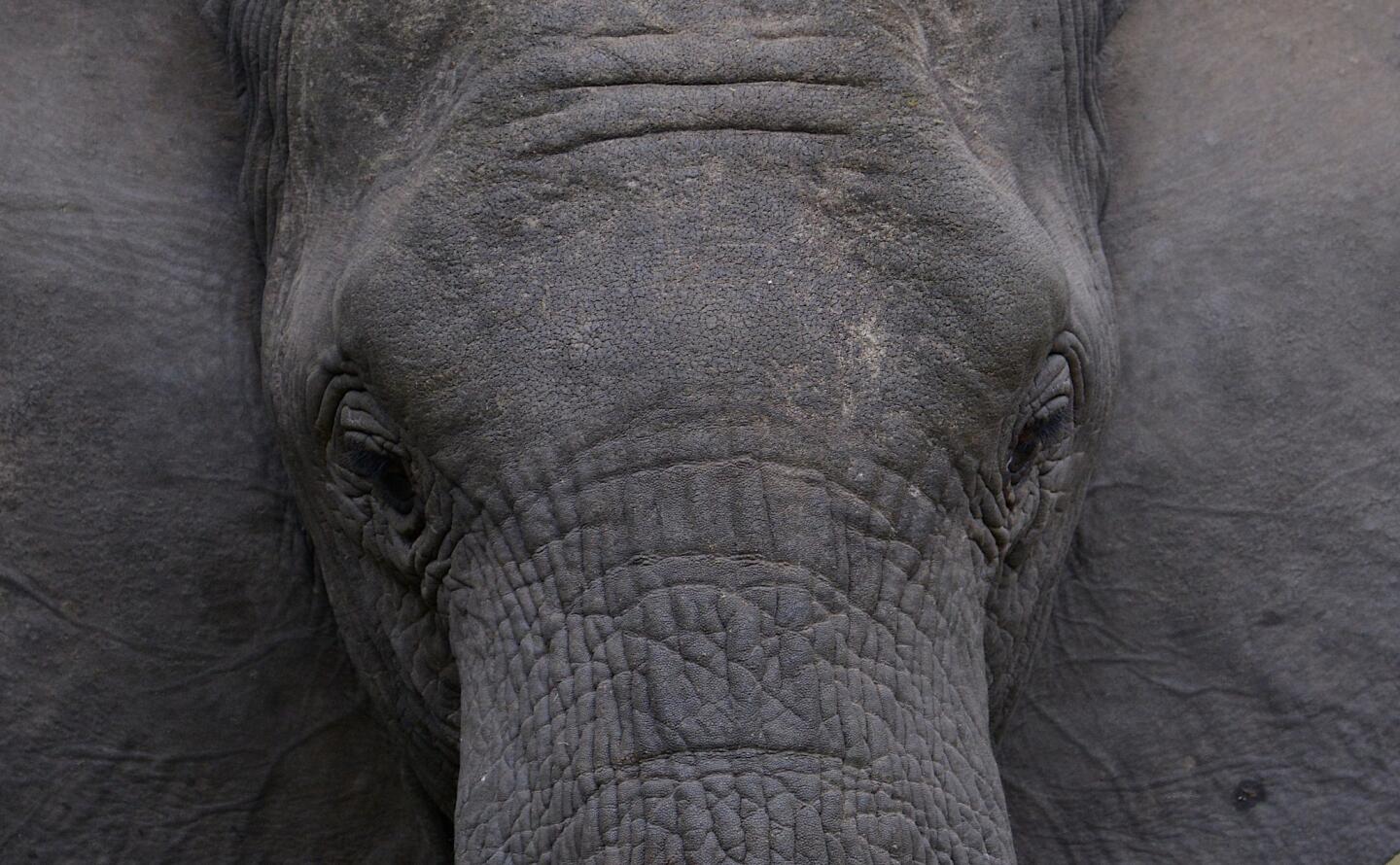
Everyone loves an elephant but no one would want one as a neighbor. They rip apart trees and, well, everything in sight. We were once surrounded in our Land Cruiser for an hour by a herd that was dismantling its jungle surroundings. Occasionally one would look up, no doubt curious about that weird looking “Green Beast” with the pop-up top. (Steve Stroud / Los Angeles Times)
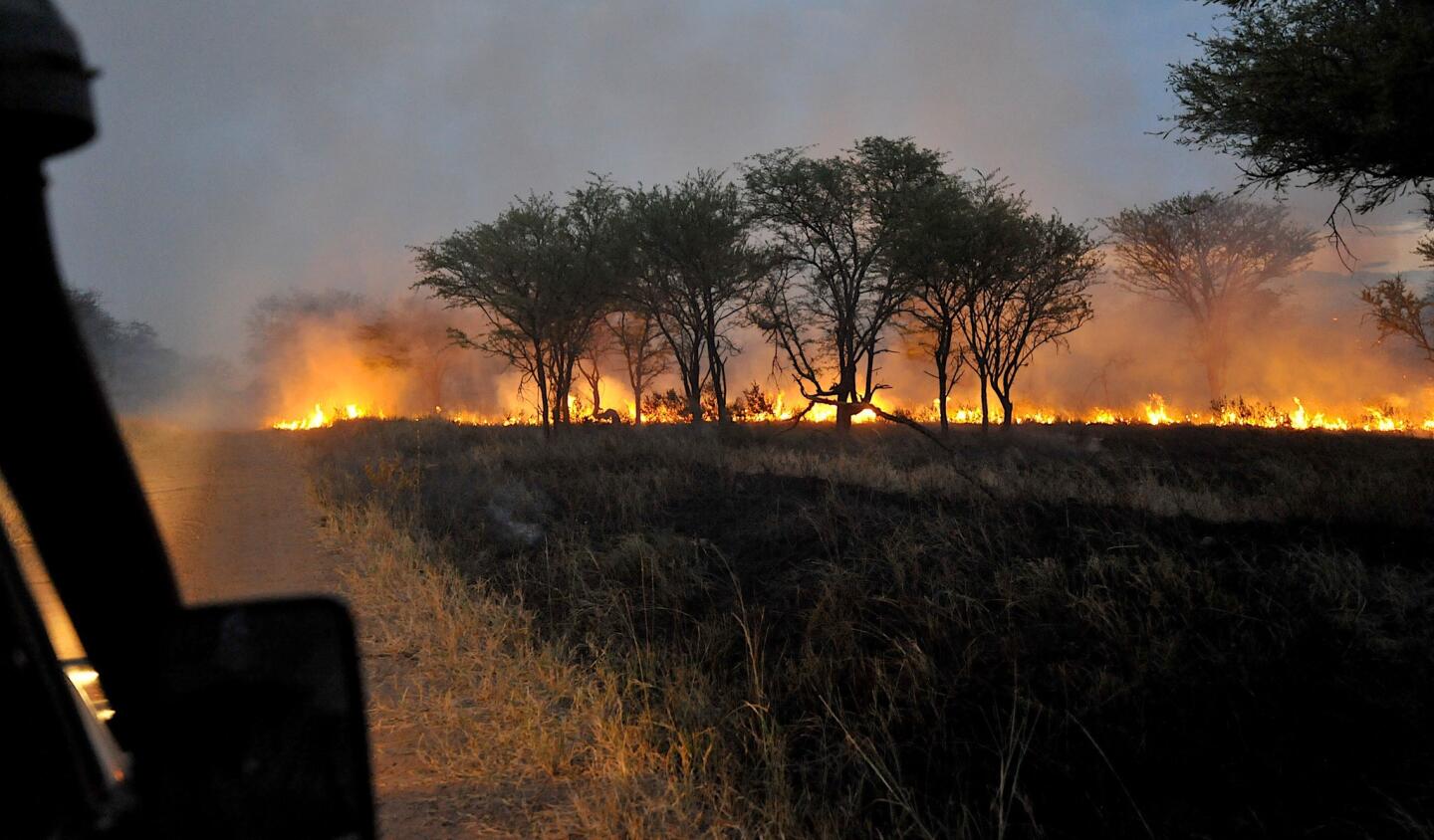
The guide behind the wheel of our Land Cruiser waits for a break in the flames blocking the passage back to our lodge in the Serengeti National Park in north Tanzania. (Steve Stroud / Los Angeles Times)
Advertisement
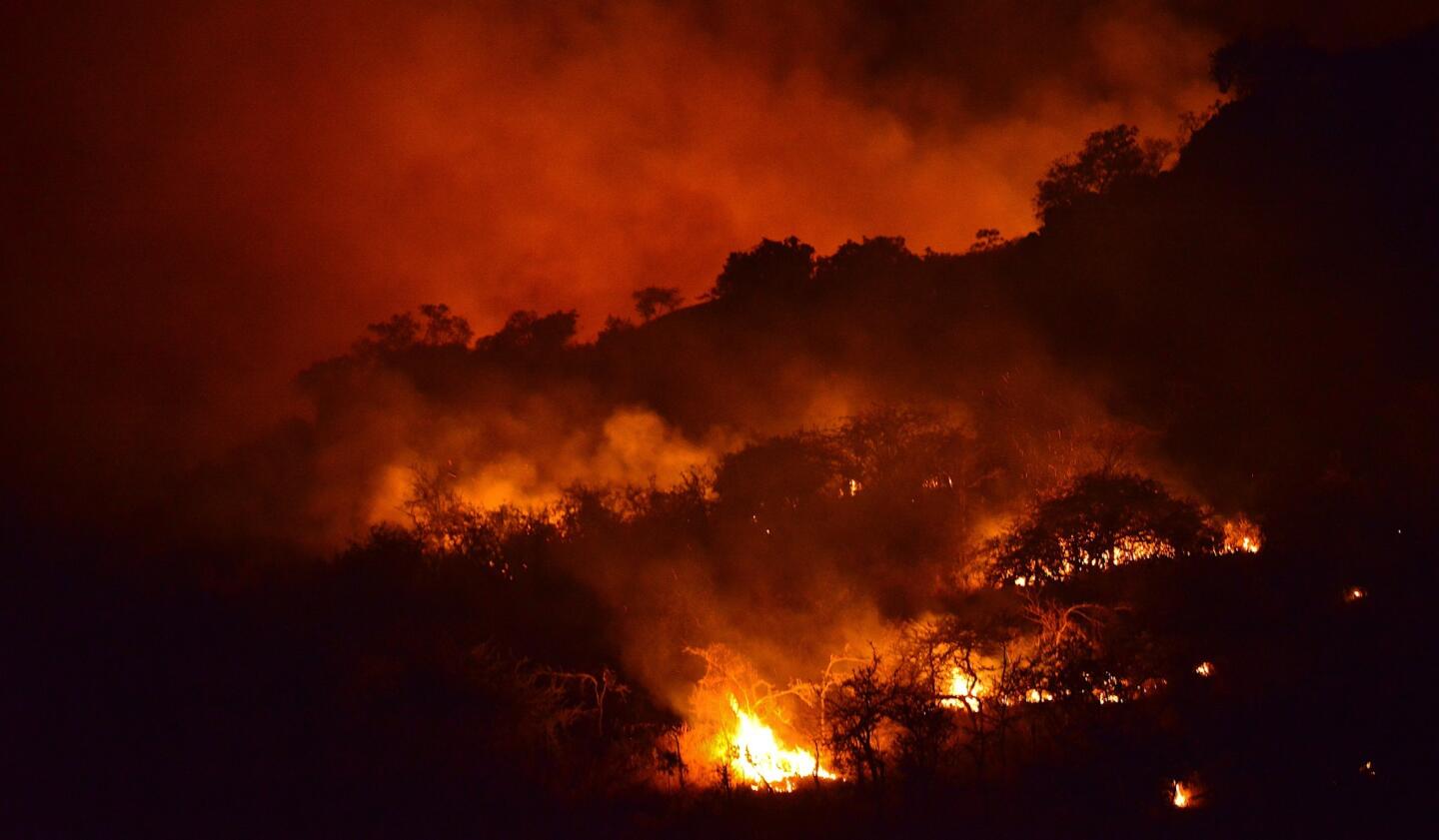
But we didn’t altogether escape the fire. An hour later, back at Migration Camp, this was the view from our veranda dining table. The camp staff assured us we were protected by the Grumeti River, which separated us from the flaming hillside. (Steve Stroud / Los Angeles Times)
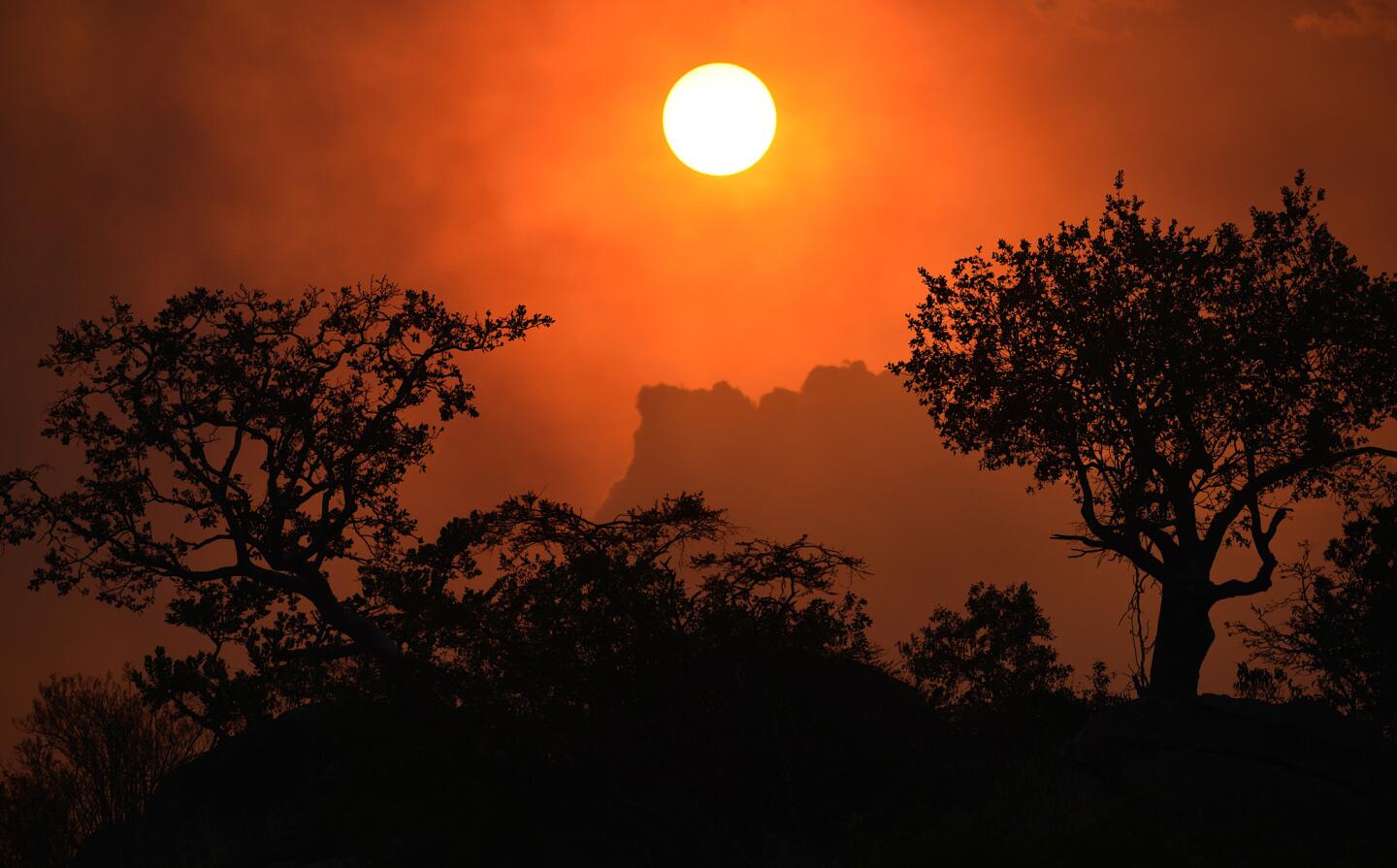
The smoke-filled sky made for a spectacular sunset, but the topic of dinner discussion always came back to the crackling blaze and the question of whether it was a “controlled” fire. (Steve Stroud / Los Angeles Times)
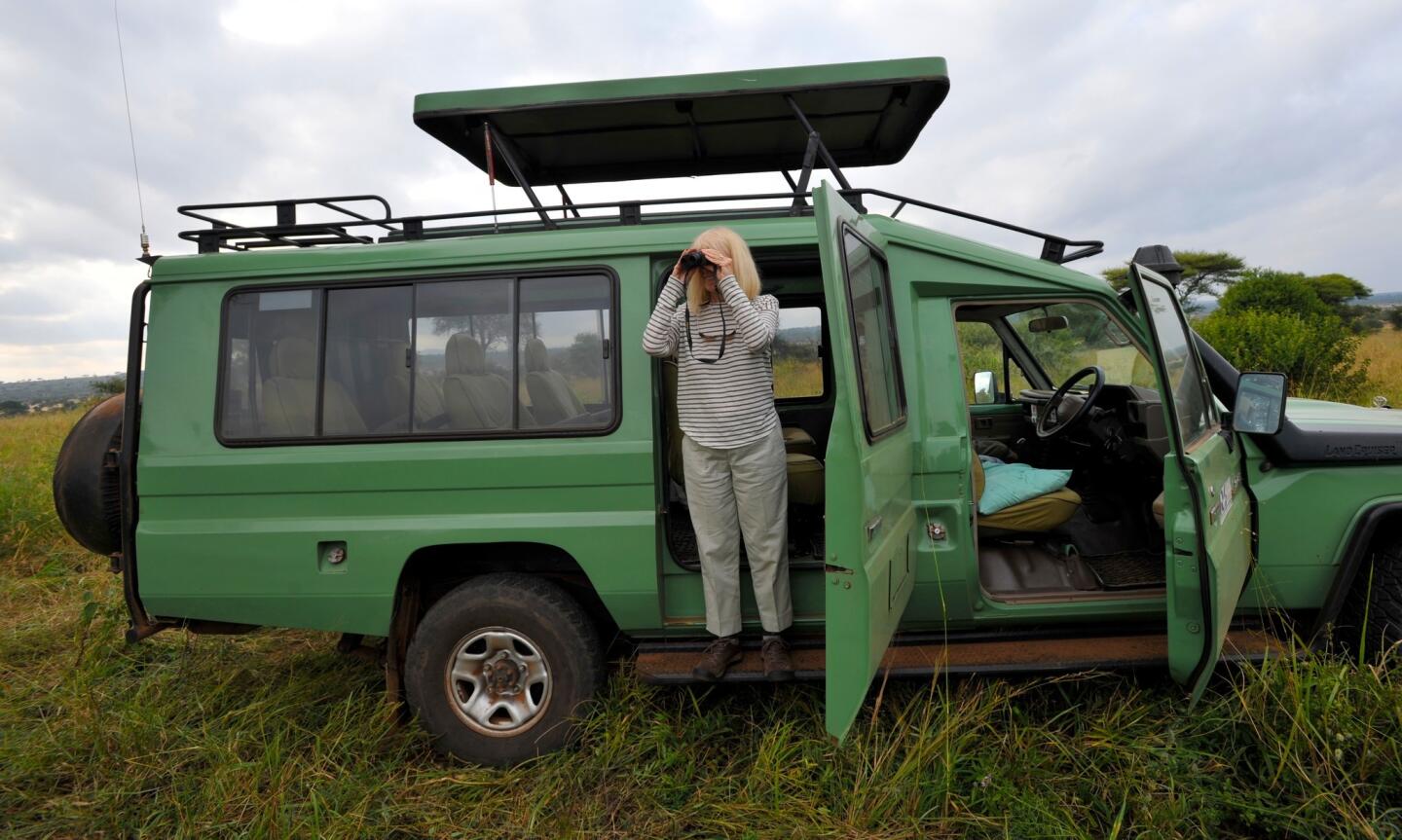
We splurged by having our own driver and naturalist, and it was well worth it. That allowed us to switch from one side to another of our off-road vehicle, the “Green Monster,” for spectacular viewing. Leaving the relatively safe confines of the Land Cruiser is ill-advised in the bush, so when the animals come alongside the vehicle, binoculars are a necessity. (Steve Stroud / Los Angeles Times)
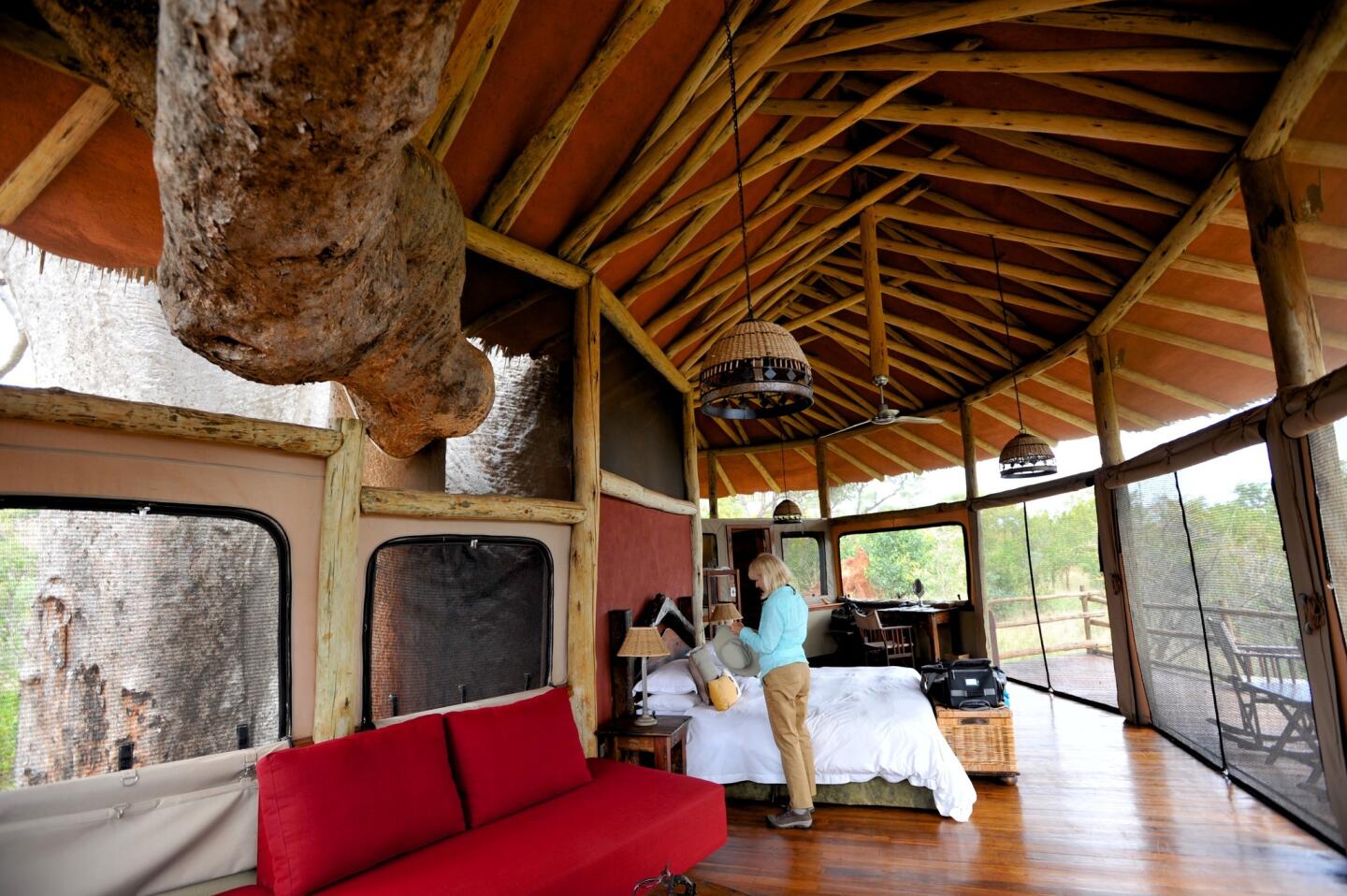
We felt some guilt referring to this as a safari. Although our accommodations were “tents” -- some in treetops, others slightly elevated for views -- they were by no means of the “roughing it” variety. We had to be coaxed out of our first treetop lodge in Tarangire, fearing we would never again find anything as wonderful. This 57,000-acre conservation area is dotted with giant baobab trees. At the Tarangire Treetops camp, the tree’s limbs protruded through the canvas walls and thatched roofs. But even in this luxury, a visitor can’t forget the danger that lurks: Access to the veranda surrounding the treehouse is by ladder, leading to a trap door that is closed at night to prevent unwanted wildlife from straying inside. (Steve Stroud / Los Angeles Times)
Advertisement
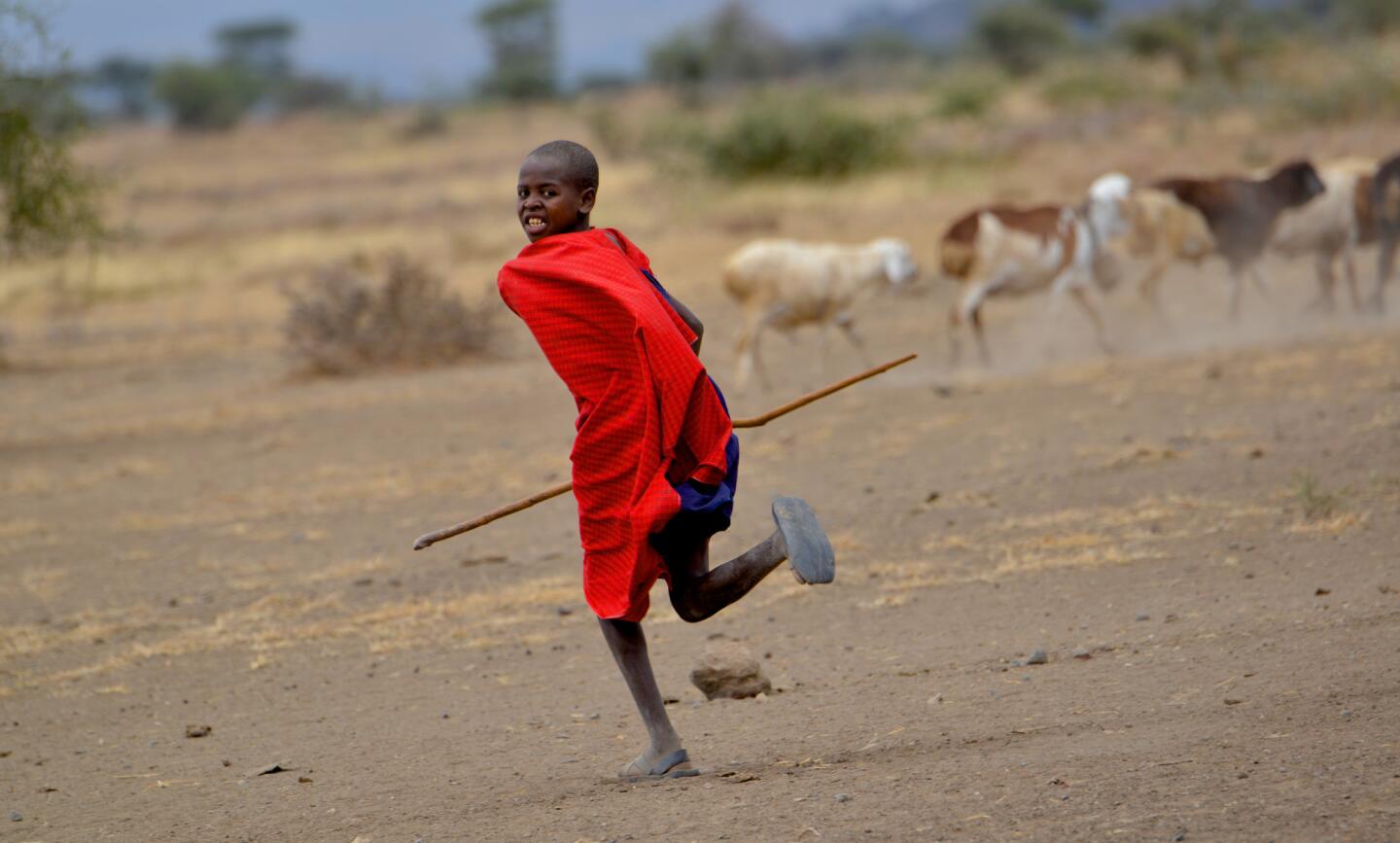
Many of the employees of the lodges are Masai, who do everything from waking up in the predawn hours to light the wood-burning water heaters for a morning shower, to accompanying jittery travelers (always with a weapon and flashlight in hand) to get them to dinner safely. And most of the population outside these idyllic lodges live in the harsh environments of the Masai villages. Boys as young as 5, carrying nothing but a spear and knife, start herding goats and later advance to watching over cattle, which is a main source of income for the tribes. (Steve Stroud / Los Angeles Times)
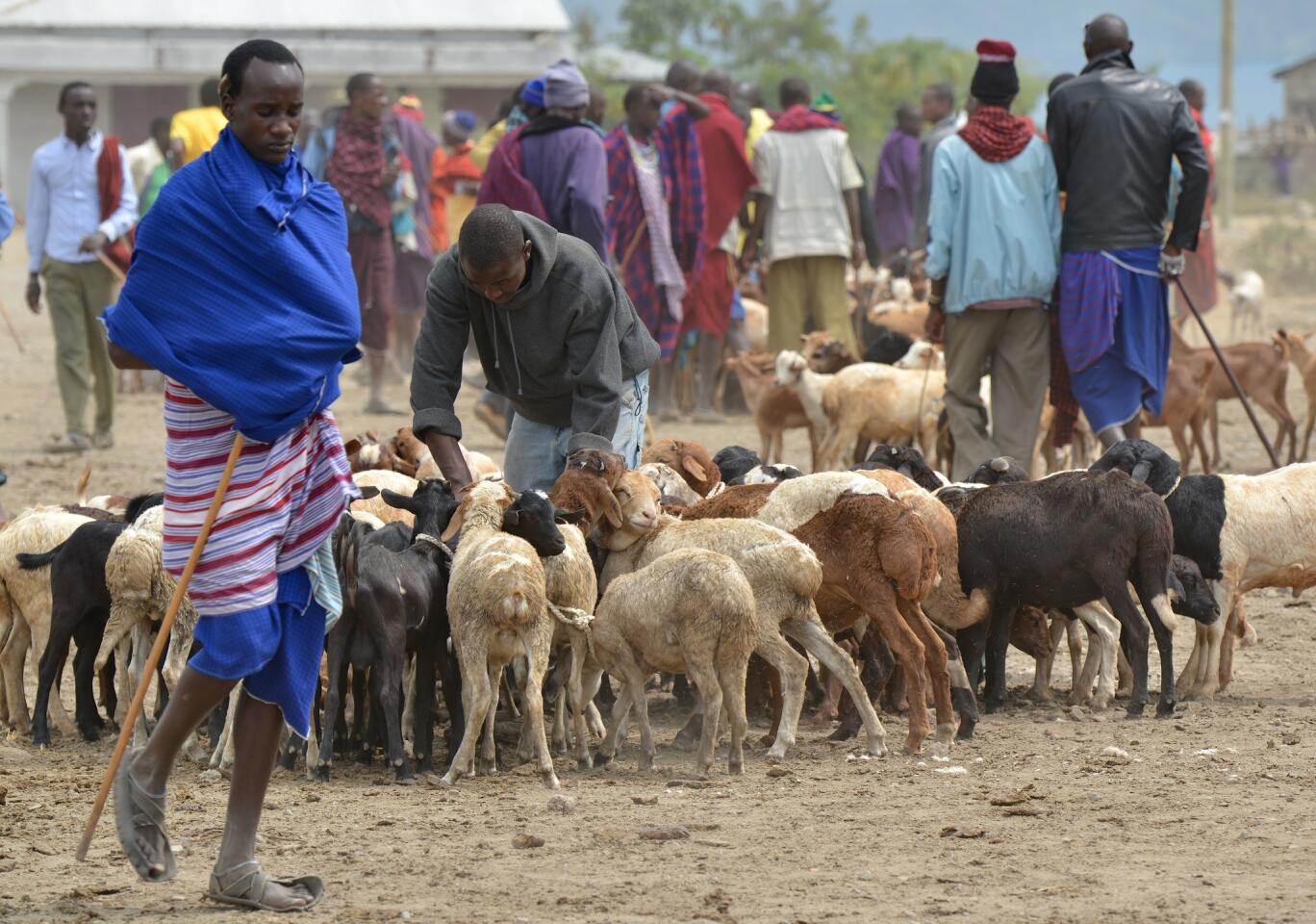
The Masai weekly markets are a must. Some money may change hands but barter may be more likely. Most Masai still dress in layers of brightly colored plaid and stripes and wear tire treads for shoes. (Steve Stroud / Los Angeles Times)
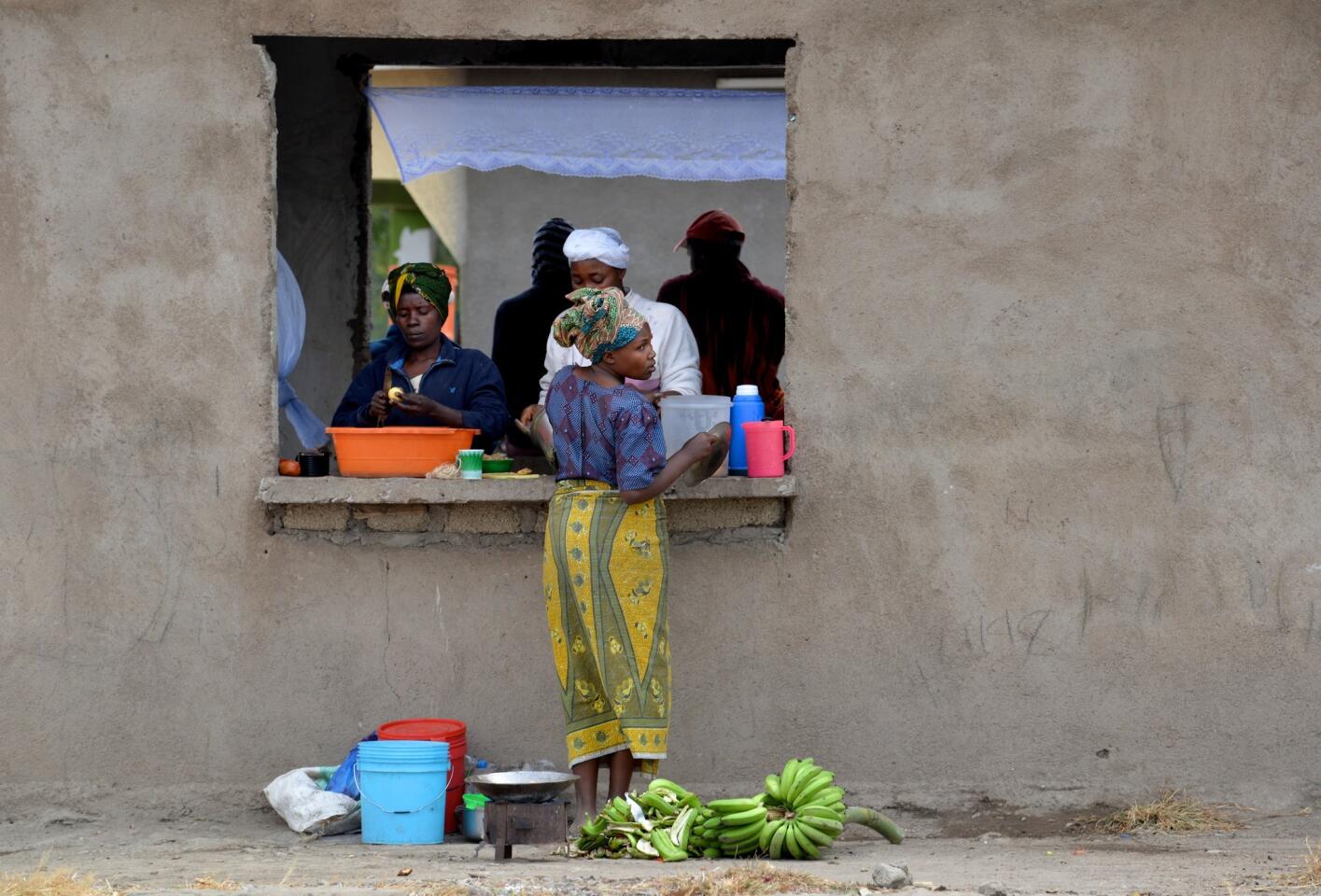
The markets are a key economic and social gathering point for Tanzanians, many of whom walk for hours to reach them. (Steve Stroud / Los Angeles Times)

In the small villages, the horrible scourge of the decades-old HIV epidemic is still apparent -- and no more so than the number of orphaned children. We visited an orphanage in Mto wa Mbu. Education is important here, and it is hard to pry a coveted pen out of the hands of the young students, even while they are playing. (Steve Stroud / Los Angeles Times)
Advertisement
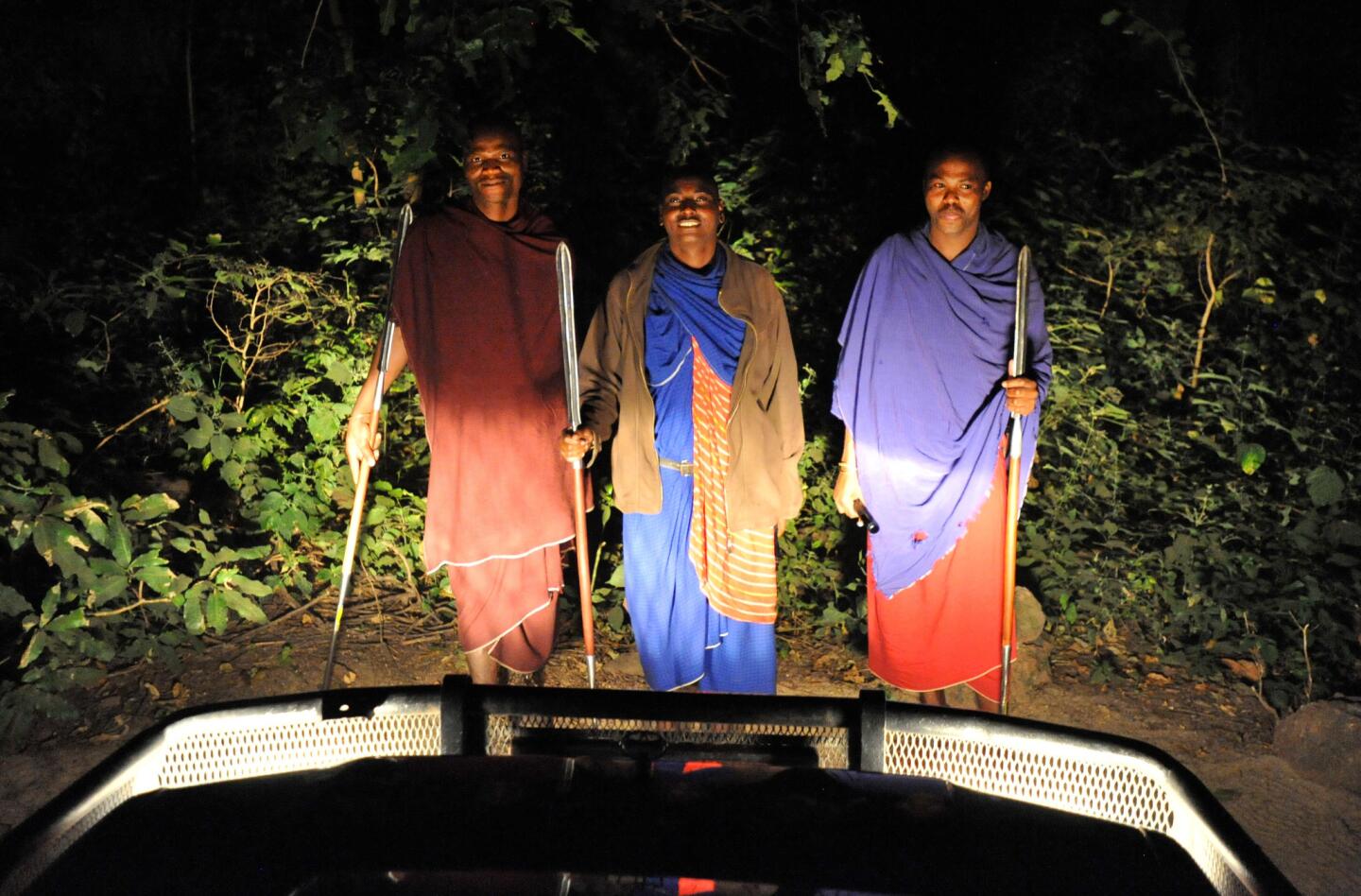
The Masai made our Tanzanian experience richer. Highly attuned to their surroundings, they sang to us, educated us and shared with us wonderful stories about their culture and their country. (Steve Stroud / Los Angeles Times)
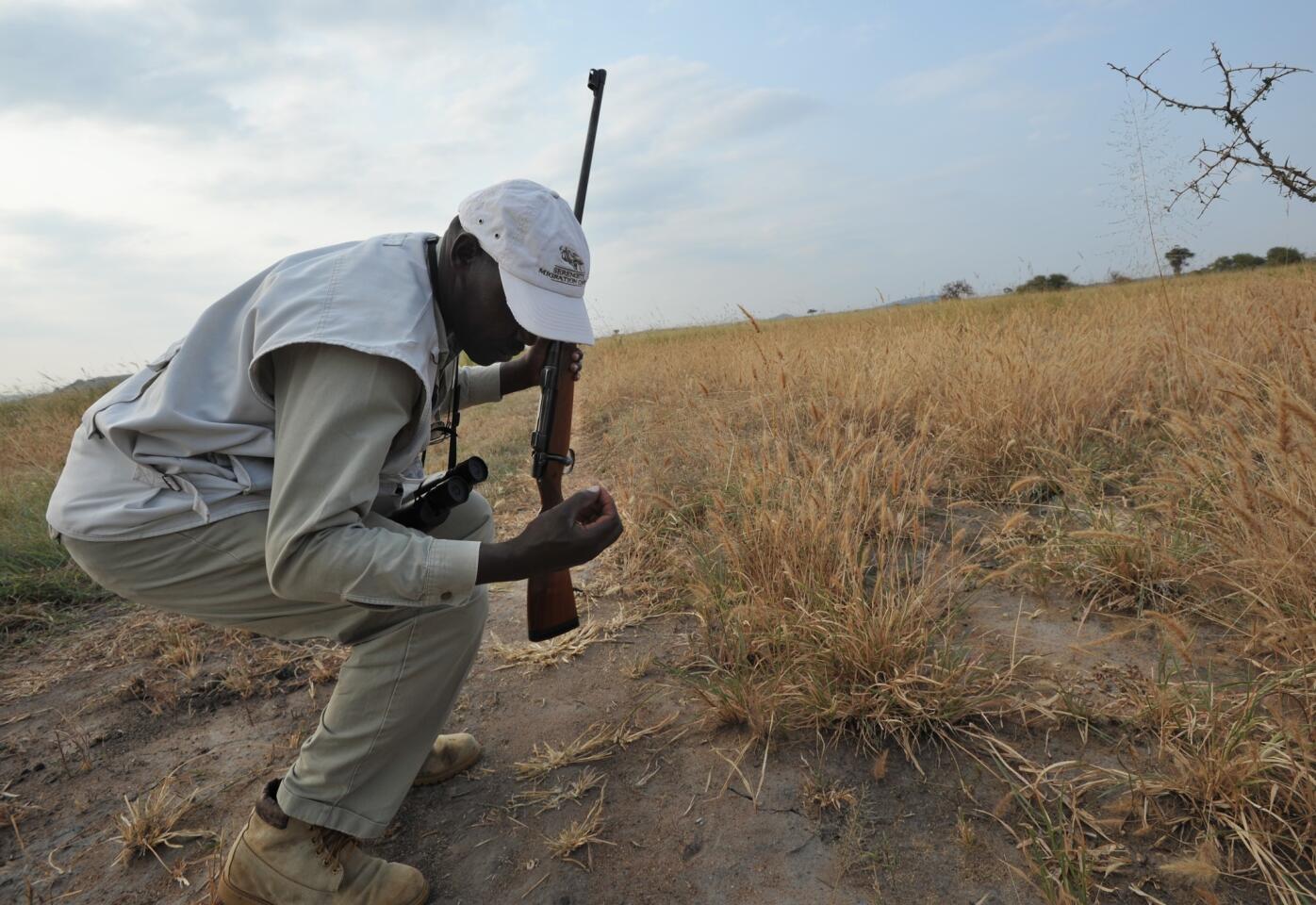
The Masai and other Tanzanians also guarded us. An armed guide showed up at our door to accompany us on a bush walk that we had casually declared we’d be taking after lunch. (Steve Stroud / Los Angeles Times)
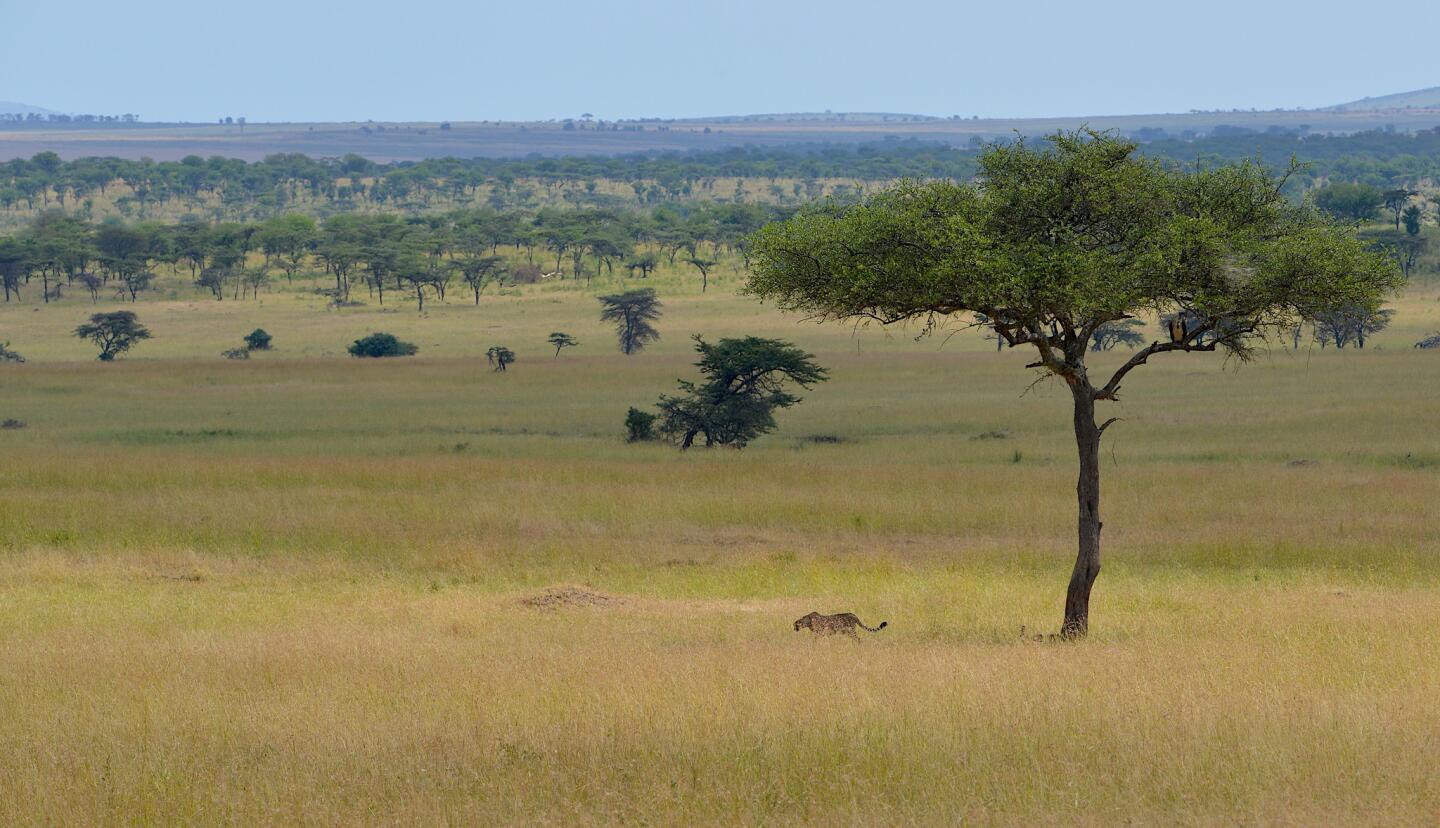
The guns were never needed, but the knowledge and acute sensory perception of the naturalist can make or break the safari experience. It took our guide’s trained eye to spot a vulture in a tree and a family of cheetahs below in the vast expanse of the Serengeti. (Steve Stroud / Los Angeles Times)
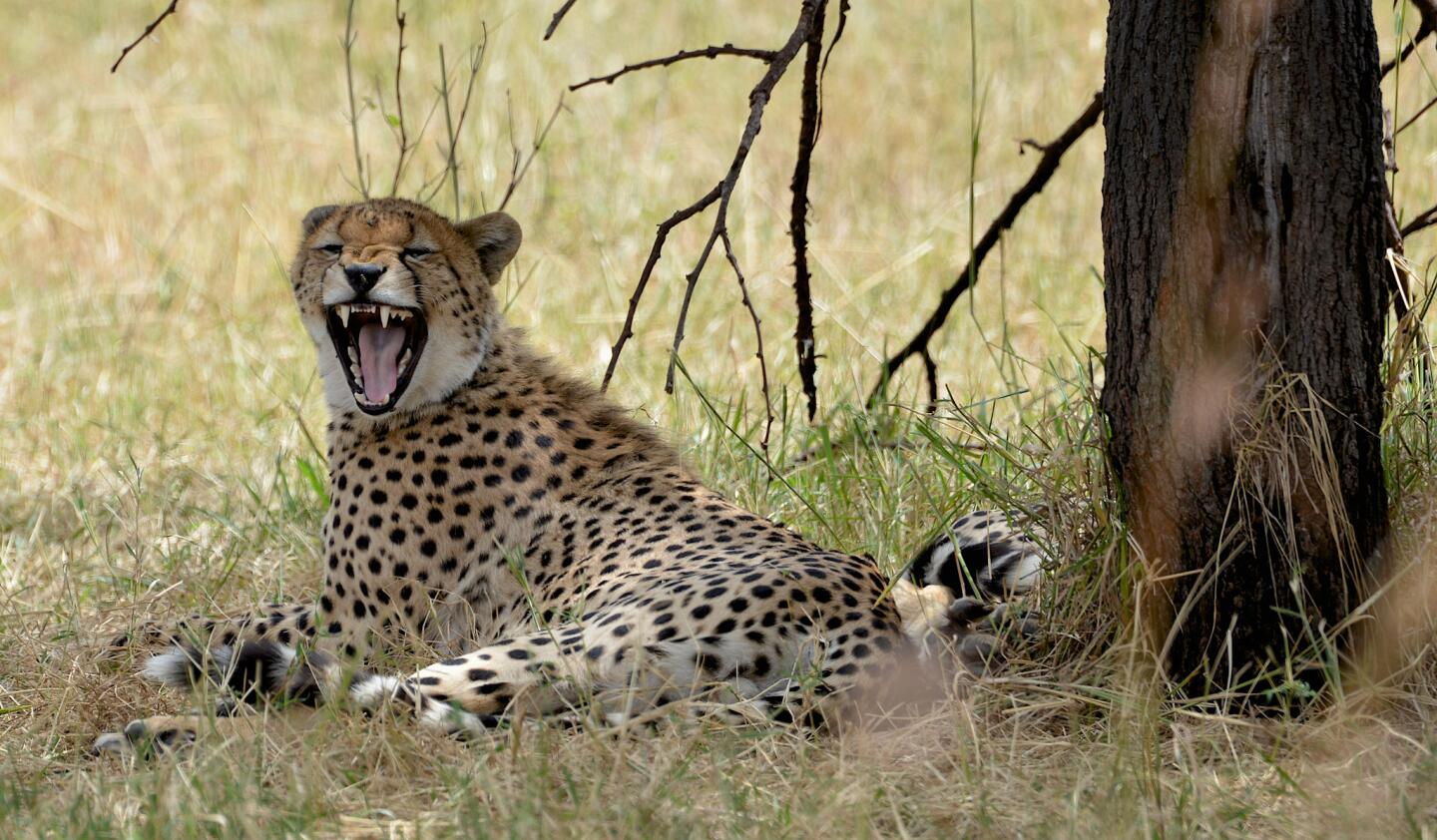
When we got closer, we could put down our binoculars. In the Serengeti, the only fences holding the animals are fluid park boundaries. That helps make this a magical experience. (Steve Stroud / Los Angeles Times)
Advertisement
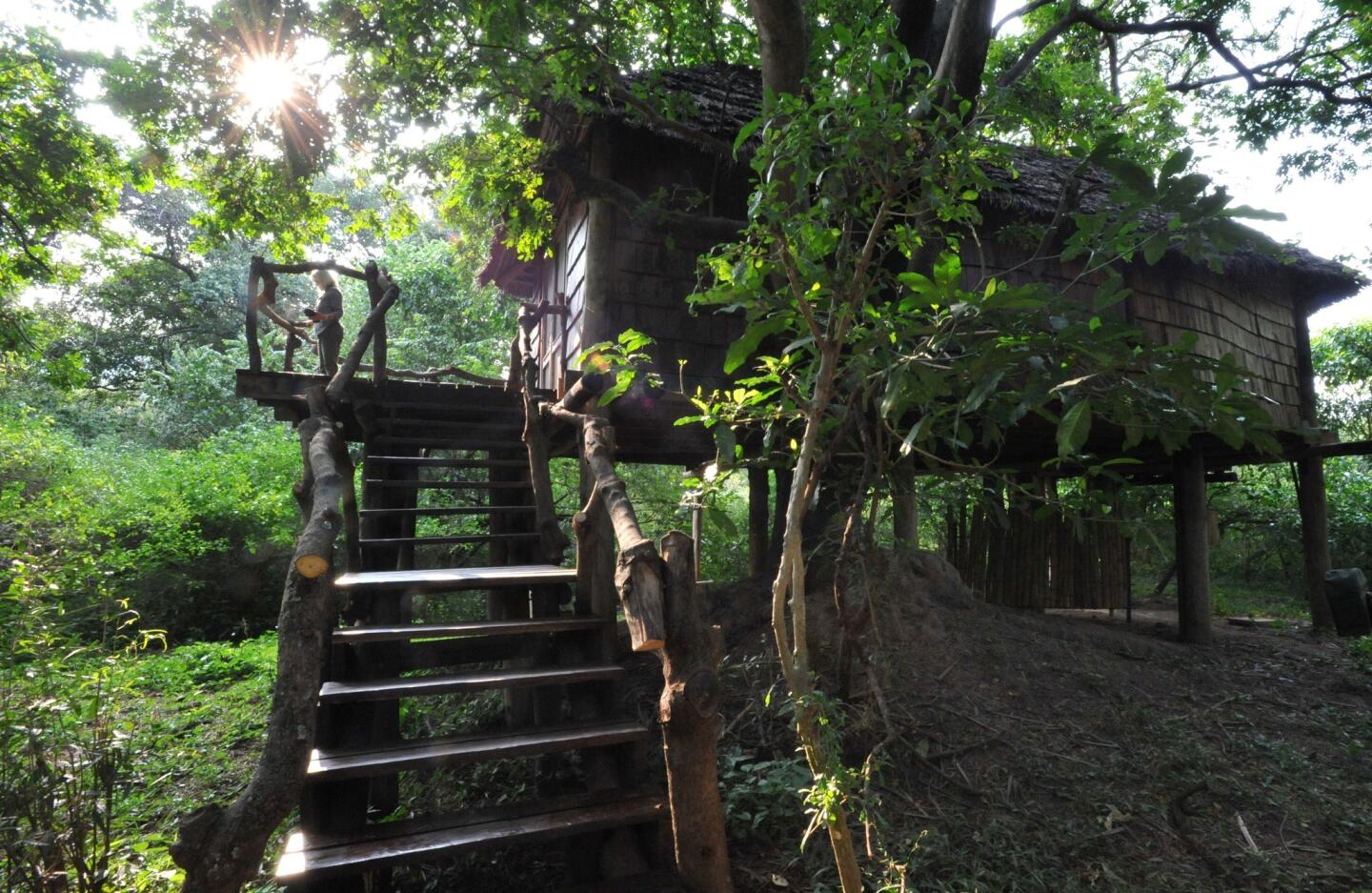
The trip wasn’t all about animal tracking. At Lake Manyara Tree Lodge in the densely wooded Lake Manyara National Park, we found time for a massage and relaxation amid the sounds of elephants rummaging outside and vervet monkeys playing on our porch. (Steve Stroud / Los Angeles Times)
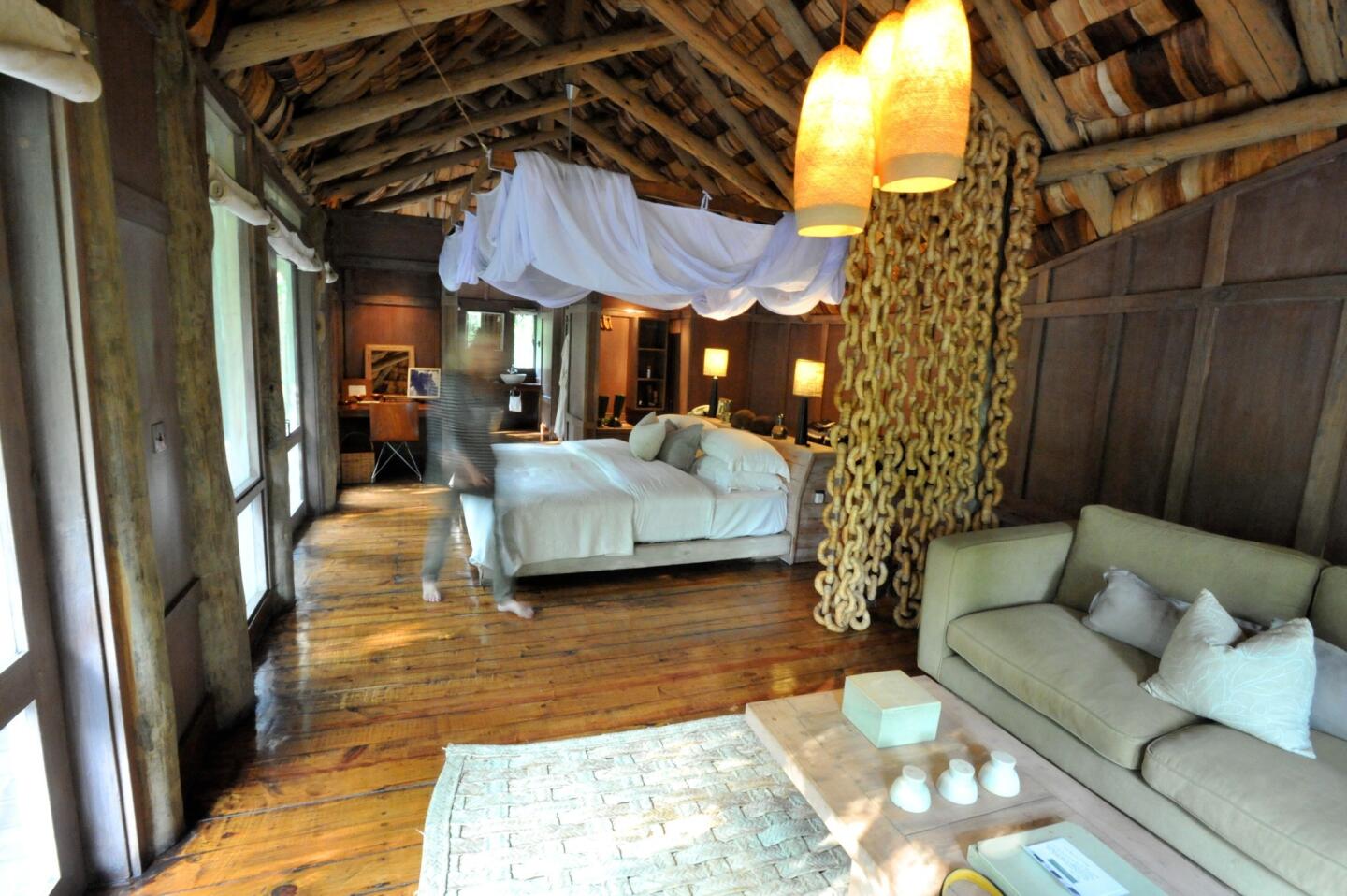
Because malaria remains a threat in many parts of the country, mosquito netting is advised at night. We didn’t get a single bite, but those tse-tse flies were vicious. (Steve Stroud / Los Angeles Times)
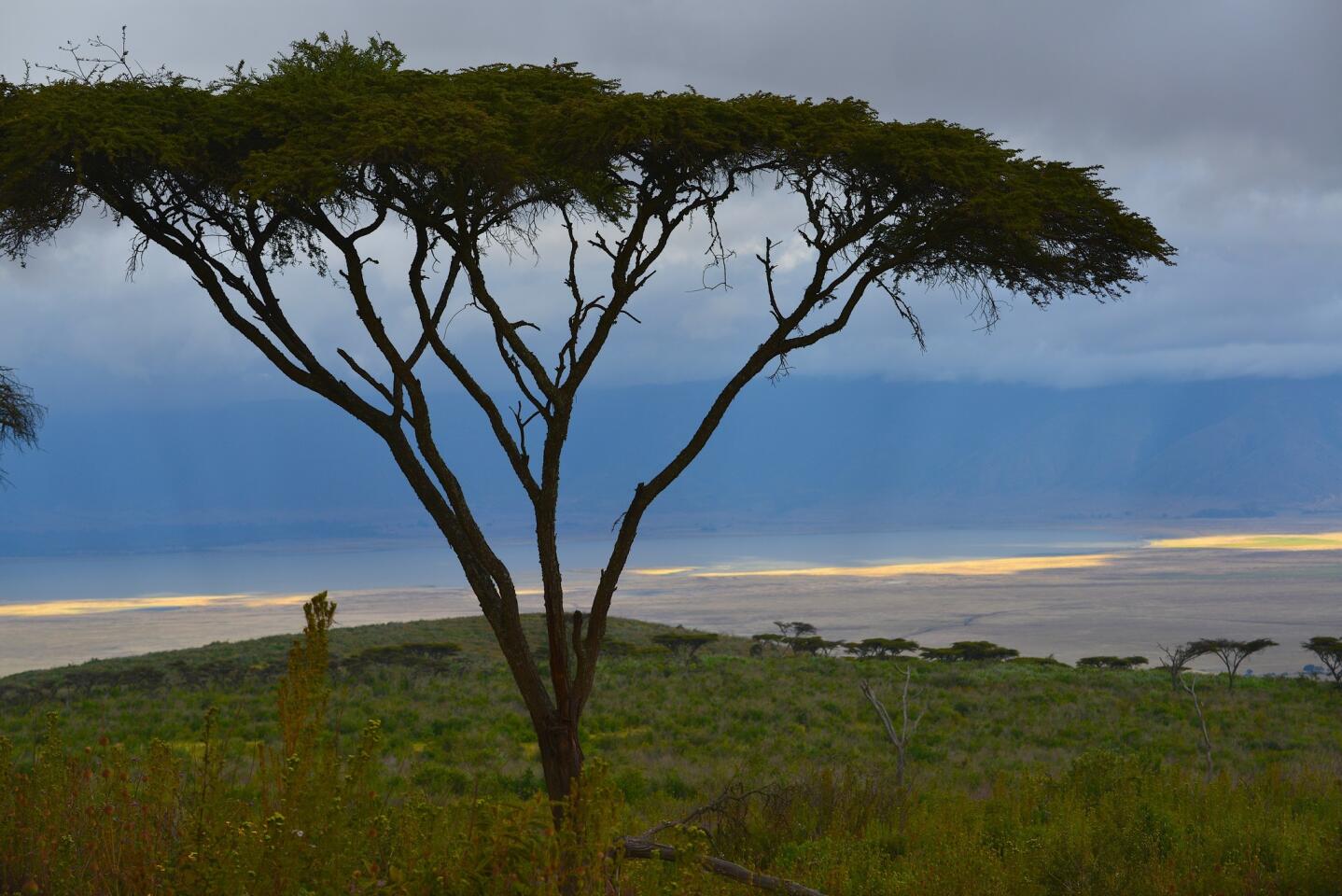
Acacia trees and beautiful sunsets became an entitlement. (Steve Stroud / Los Angeles Times)
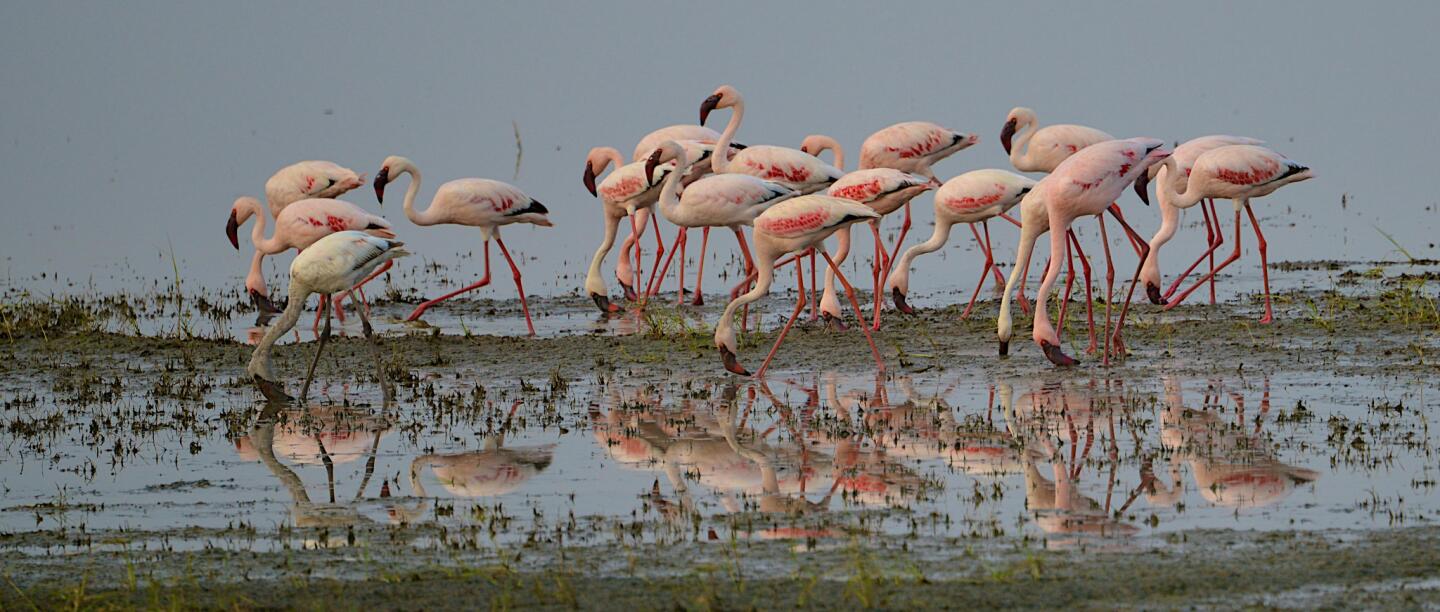
The drama of the Big Five and the Great Migration unfairly steal the show from the bird life. Flamingos, African pygmy geese and crested guinea fowl on Lake Manyara; ostrich, pelicans, vultures, hawks, eagles in the Serengeti; and bustards everywhere. (Steve Stroud / Los Angeles Times)
Advertisement
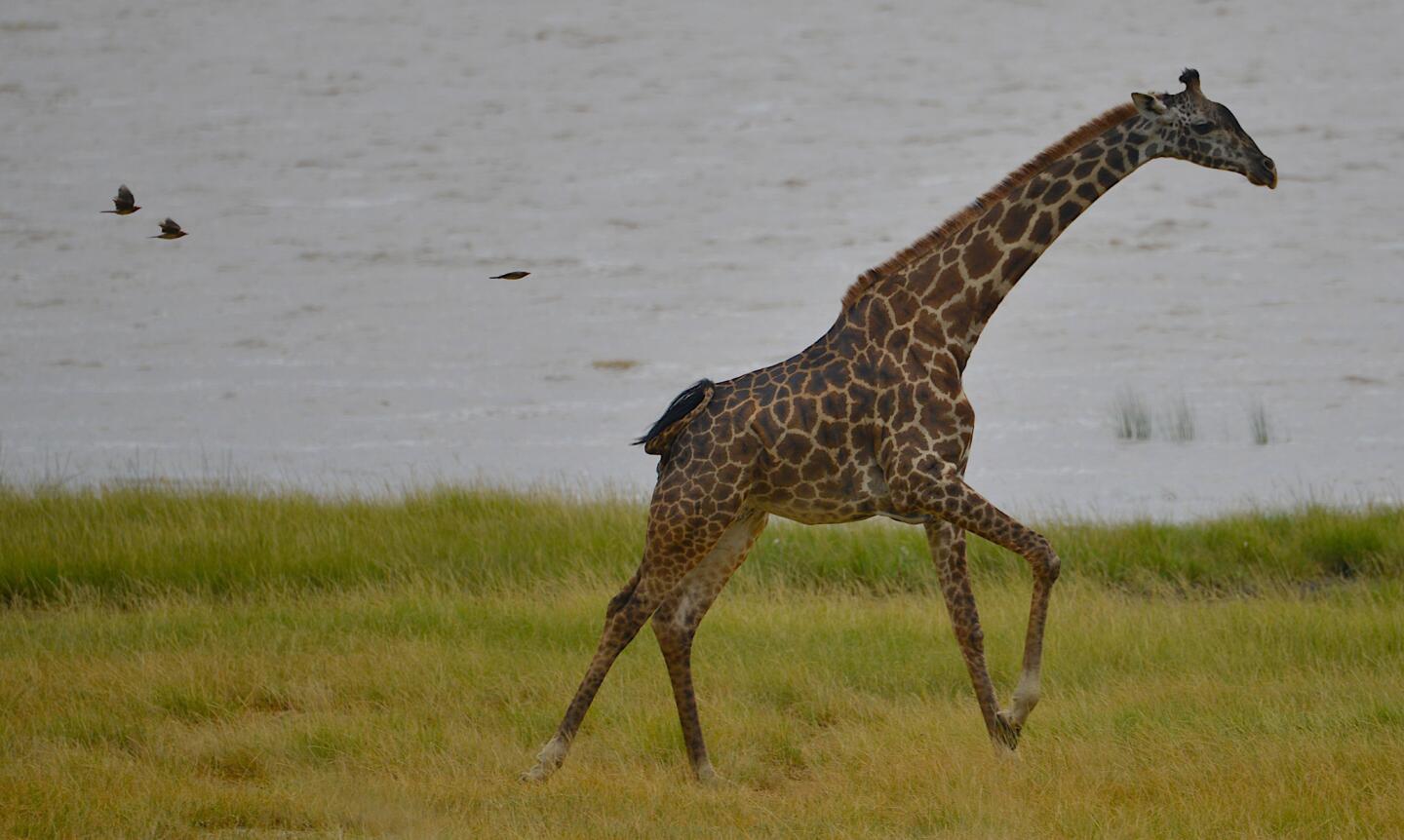
Along the shores of Lake Manyara, we saw lions eating their kill, wildebeest by the hundreds, and the beloved giraffe. (Steve Stroud / Los Angeles Times)
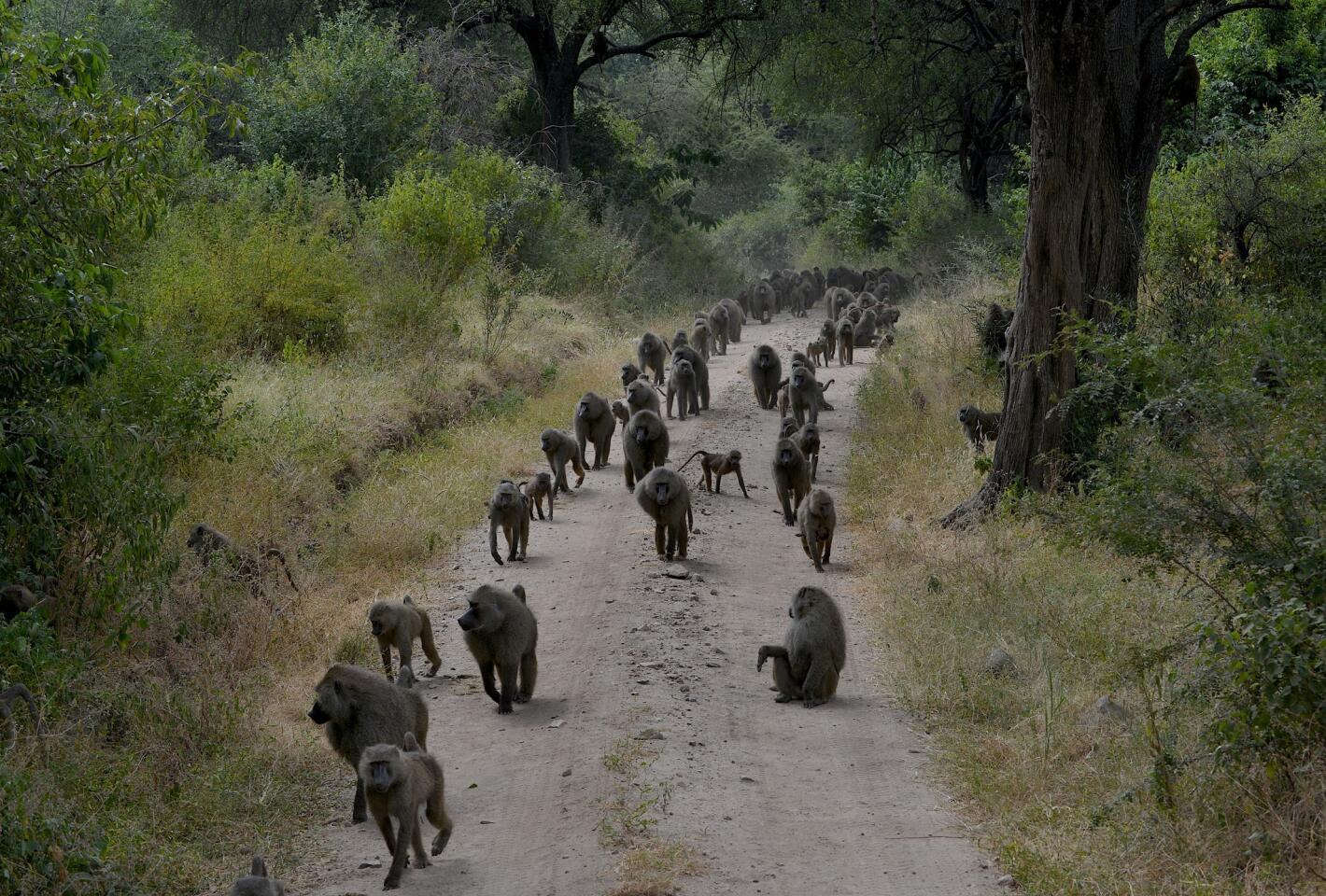
And the not-so-favorite hordes of baboons. Despite their constant grooming, they always look scruffy, and they never seem to stop mating. When they emerge from the dense foliage and take over the dirt roads, vehicles must stop and wait until the animals disappear once again into the jungle. (Steve Stroud / Los Angeles Times)
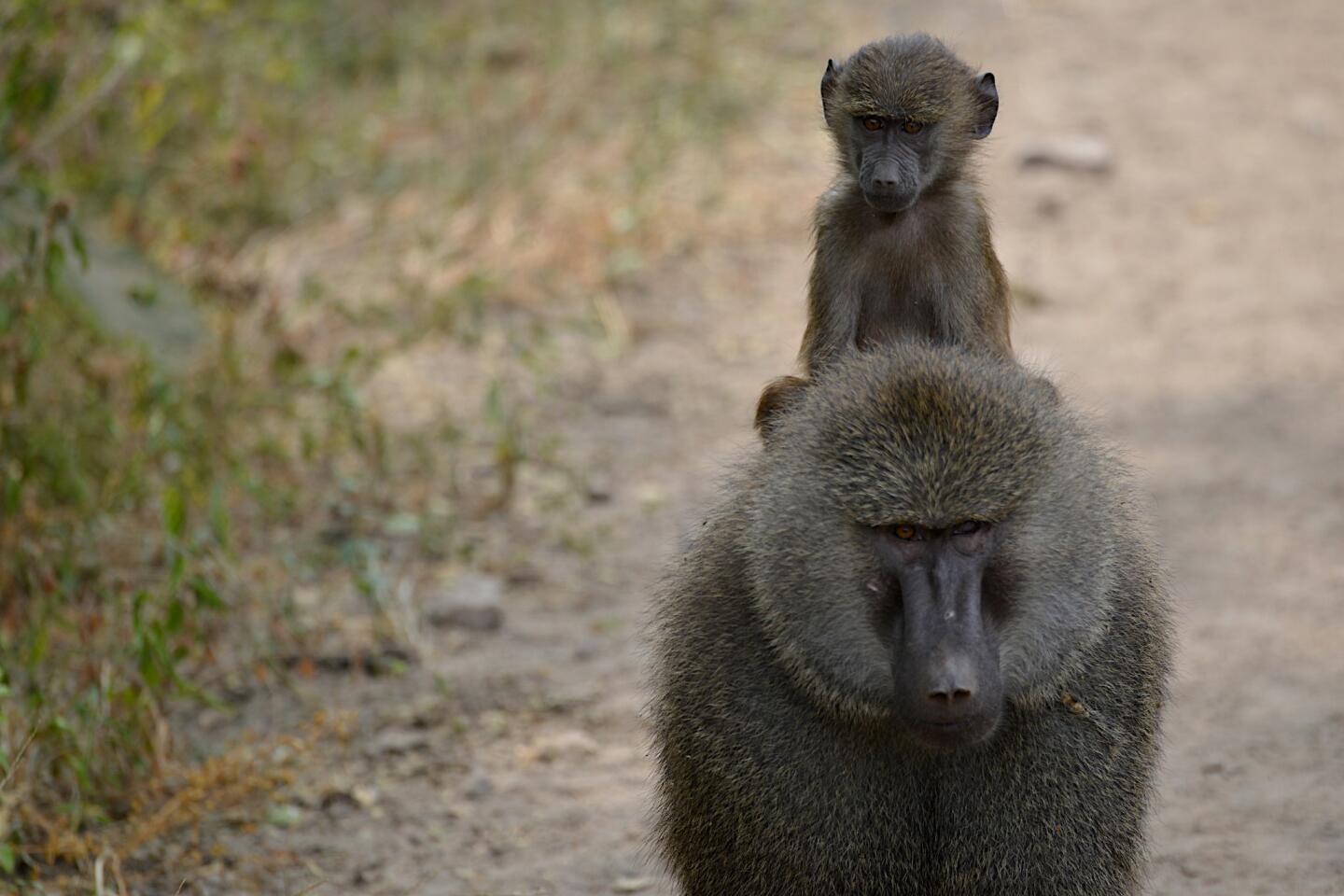
Of course, there is the occasional cute scene. Necessary prop: a baby on top. (Steve Stroud / Los Angeles Times)
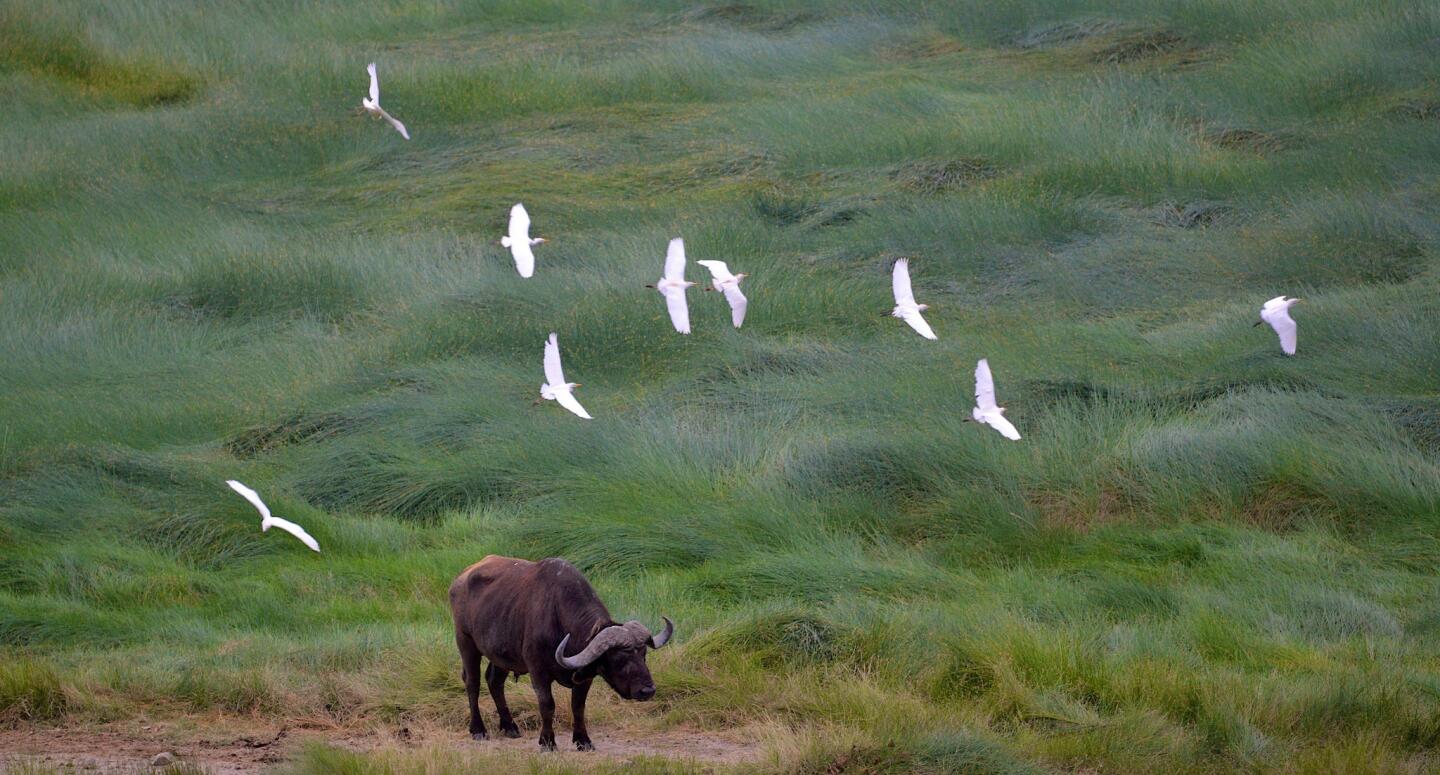
A Cape buffalo finds tranquility on the shores of Lake Manyara. In their later years, the males often become solitary. Locals call them “retired generals.” Lions are highly respected, but many Africans fear the Cape buffalo more for its speed, power, lethal horns and, most of all, its unpredictability. (Steve Stroud / Los Angeles Times)
Advertisement
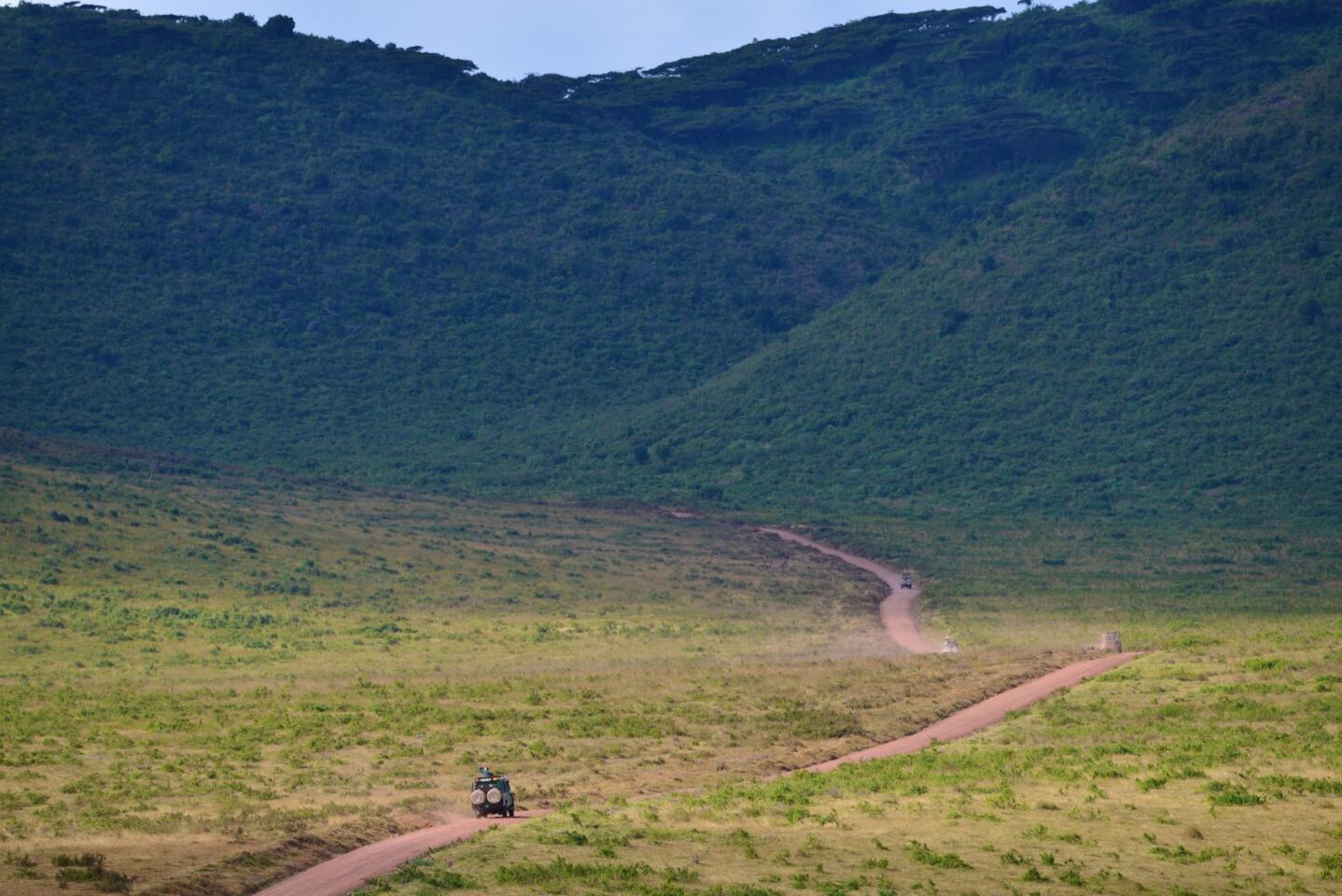
More than 30,000 mammals make the Ngorongoro Crater their permanent home. Animals are free to move in and out of the crater, but the rich volcanic soil, lush forest, and spring lakes help entice grazers and predators to stay year round. The downside of this eye-popping natural wonder: There are few roads that traverse the crater so the density of vehicles and, therefore, tourists diminishes the sense of adventure. (Steve Stroud / Los Angeles Times)

An icon of the Great Migration is the wildebeest. Whether it’s along a lakeshore or the vast plains of the Serengeti, there is nothing comparable to the beauty of thousands of wildebeest moving seemingly without end through East Africa on the way to Kenya. (Steve Stroud / Los Angeles Times)
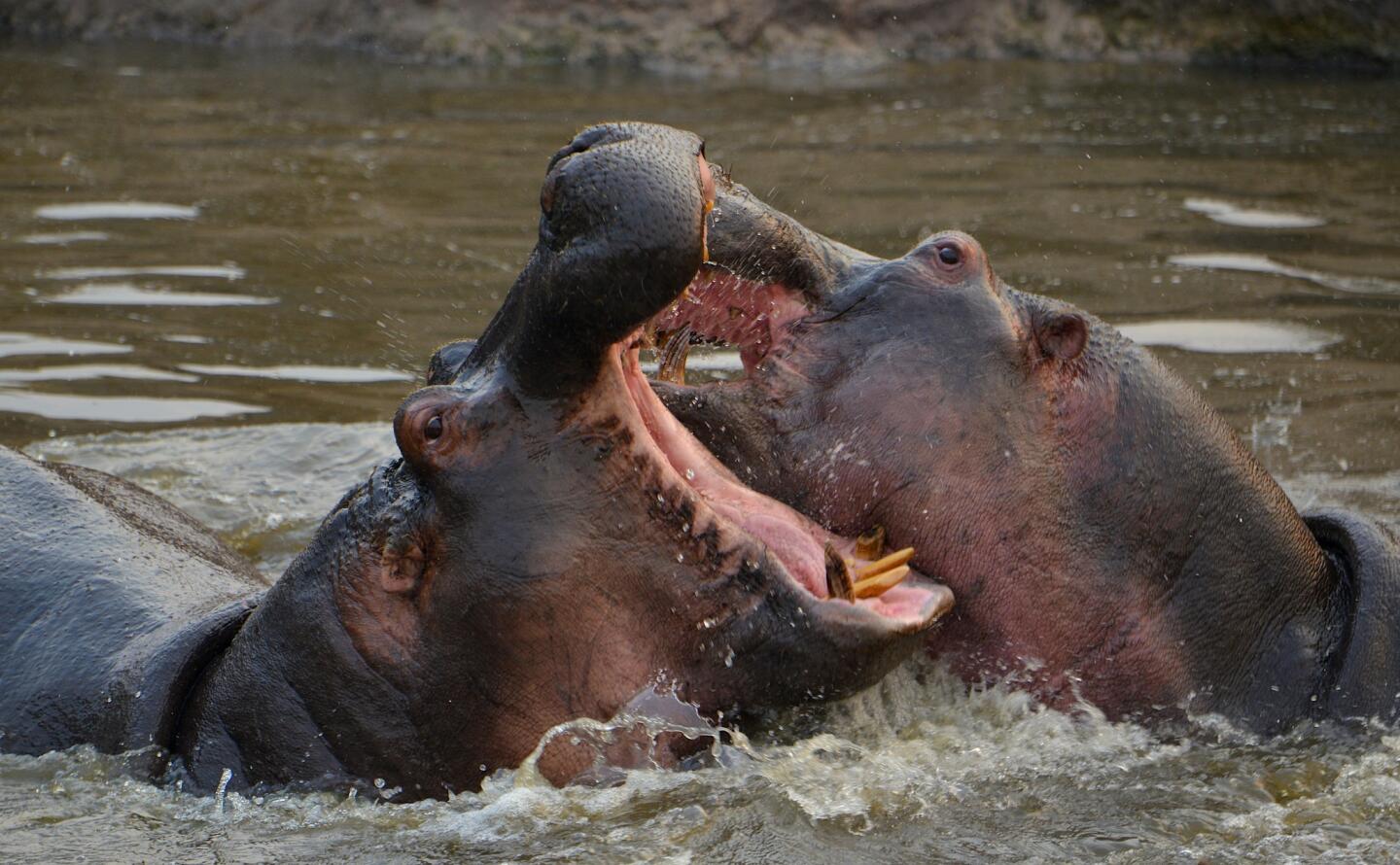
We heard the hippos long before we ever saw them. At night, they would leave the Grumeti River in the Serengeti and rummage around by our canvas cottage. Our naturalist explained that hippopotamuses, sensitive to sunlight, spend most of the day partly submerged, preferring to come out in the cooler part of the day to socialize, test one another’s dominance or graze. (Steve Stroud / Los Angeles Times)
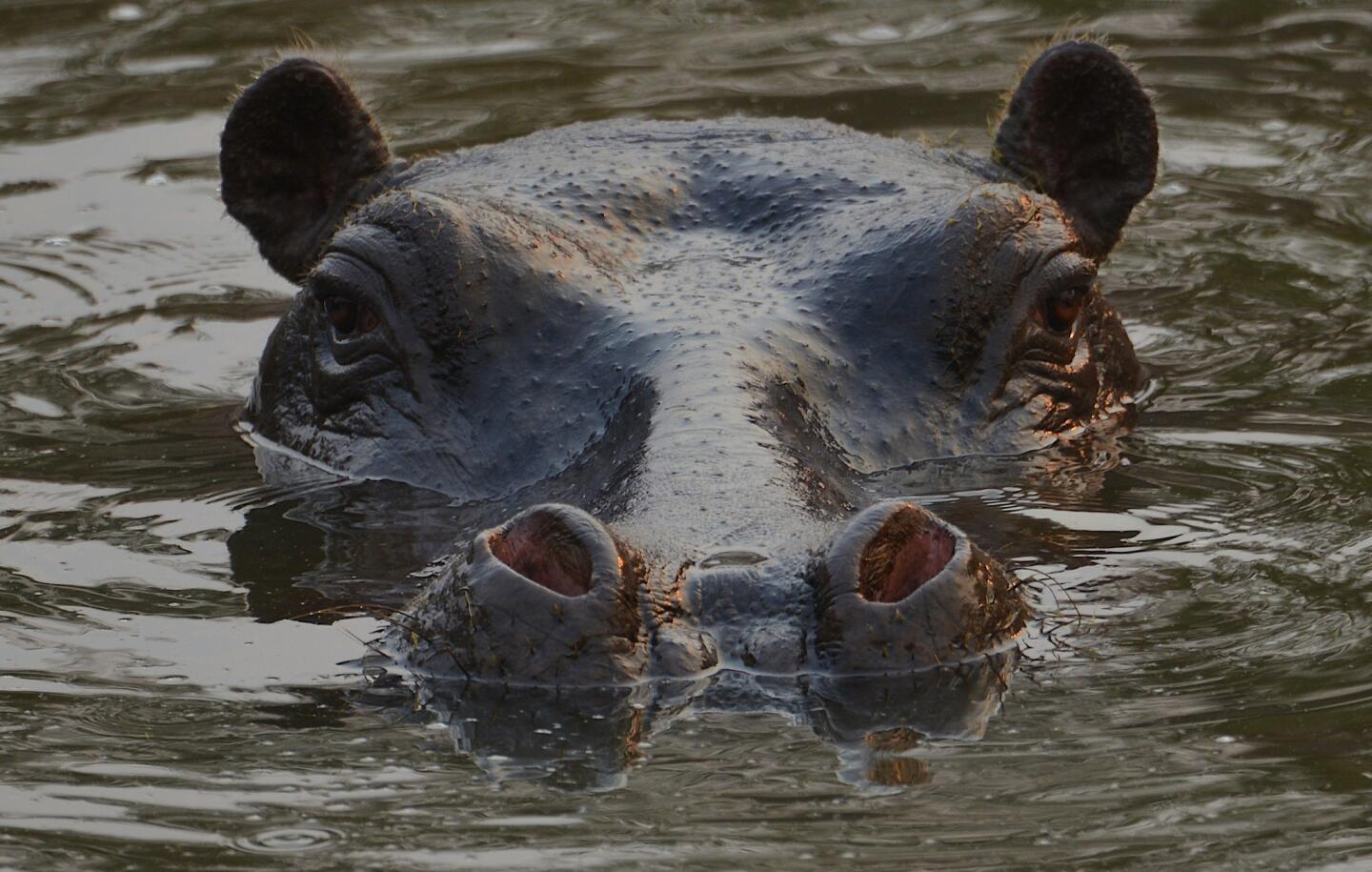
Getting ready to submerge, a hippo fills its nose with air before disappearing into the murky waters of a hippo pool. These can become stagnant and unpleasant to see or smell, because hippos defecate in the water they live in, even creating foul geysers as they splash themselves to keep cool. (Steve Stroud / Los Angeles Times)
Advertisement
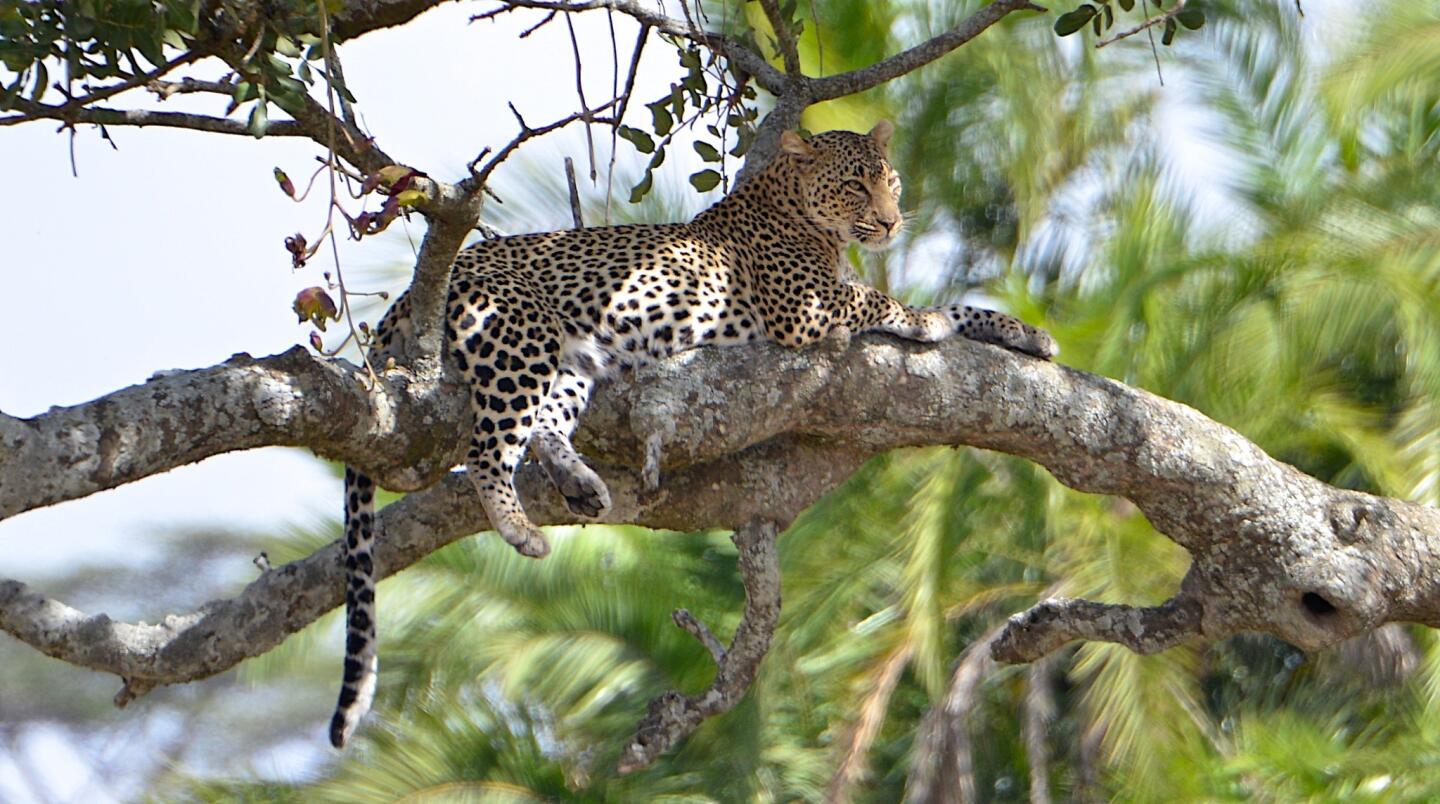
It was Day 9 of our safari -- the last. We had seen everything on our must-see list except the leopard. Despite days and hours spent scanning the low-lying limbs of one acacia tree after another, their preferred habitat, we had yet to see one of the most beautiful animals of Africa. So we set out that day with a single purpose and, as so often happened on this trip, our expert guide did not let us down. After spotting it in the higher branches of the acacia seeking refuge from the early afternoon sun, we patiently waited until, finally, it descended for a close-up photo-op. (Steve Stroud / Los Angeles Times)
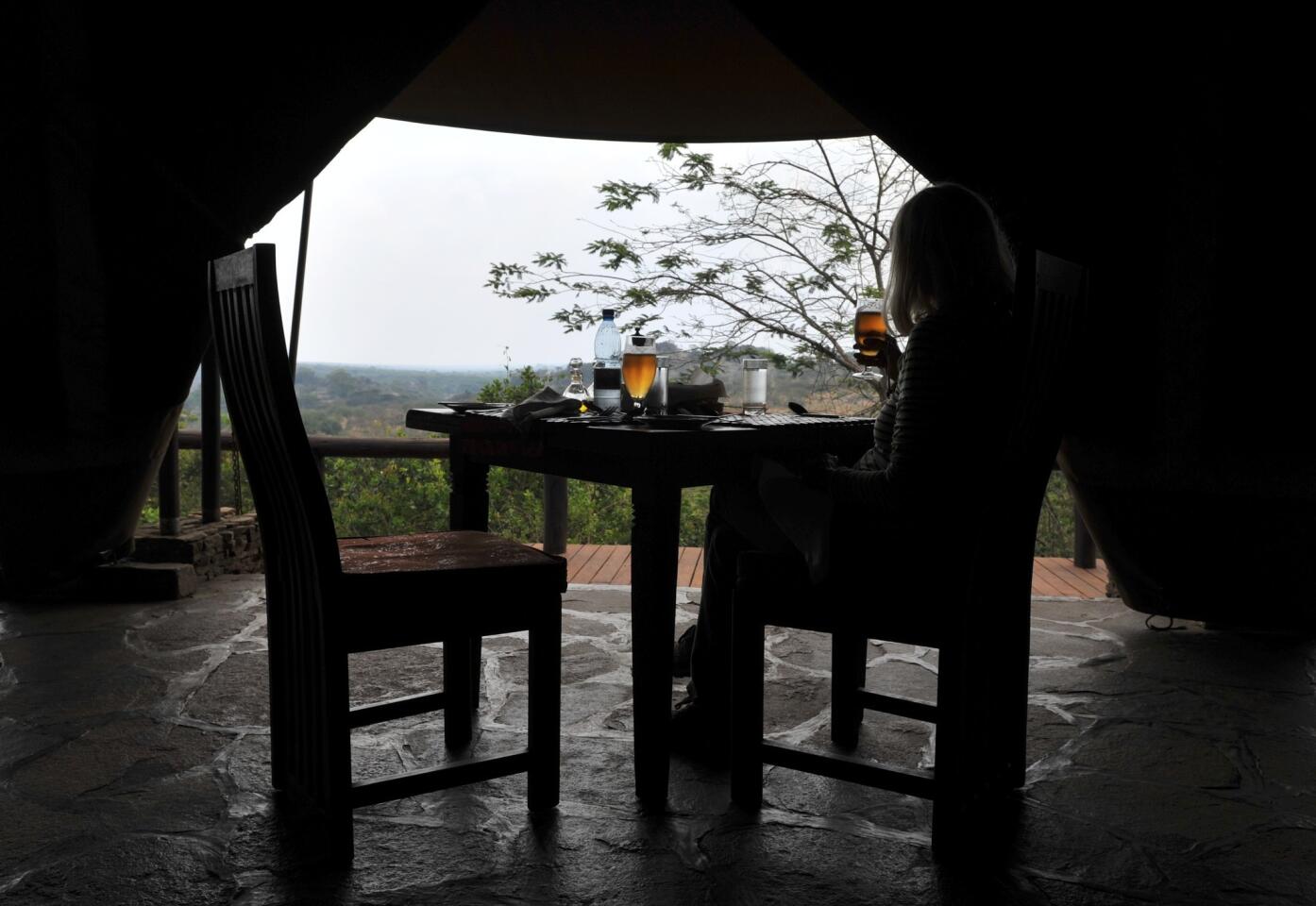
Will you forgive us for calling this a once-in-a-lifetime trip if we tell you that, in this case, it is not hyperbole? If you still need convincing, pull up this empty chair and help yourself to a cold beer on the open air dining area and watch, with this traveler, the wildebeest, on the ridge in the distance, making their way to Kenya’s Maasai Mara. (Steve Stroud / Los Angeles Times)



